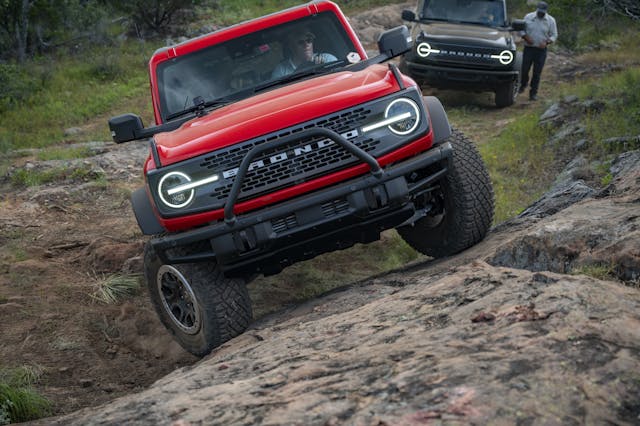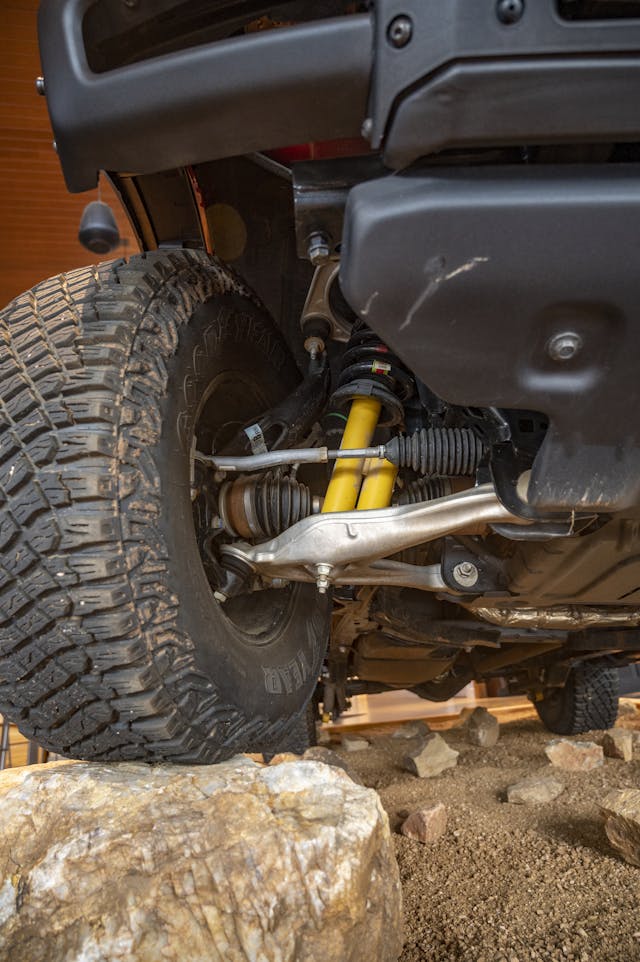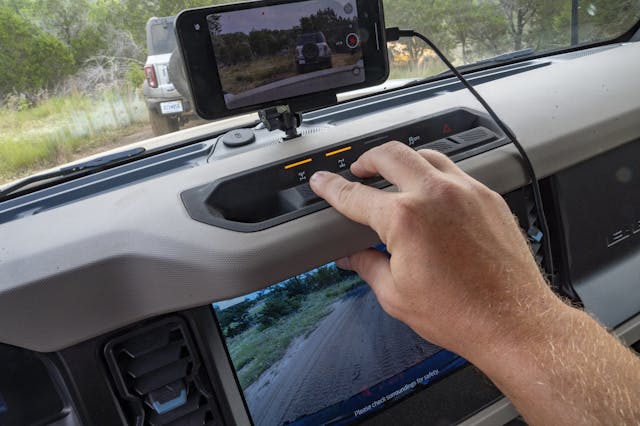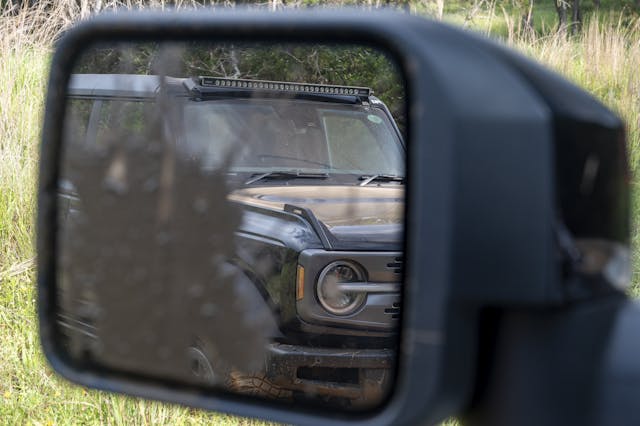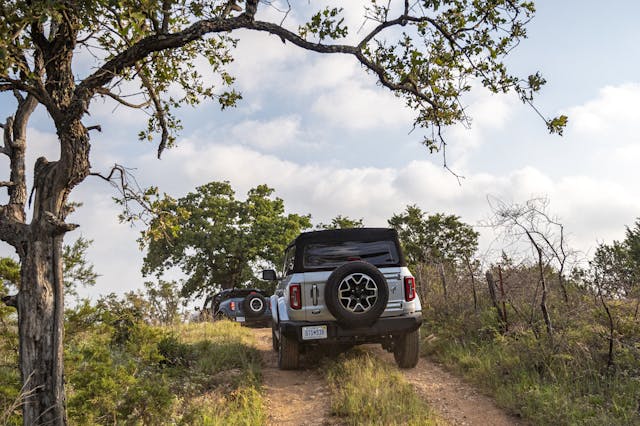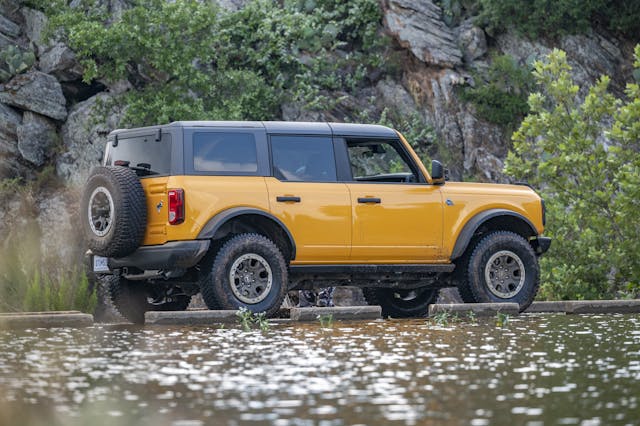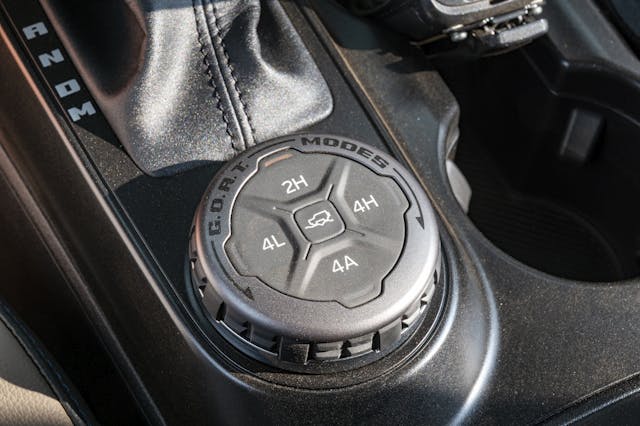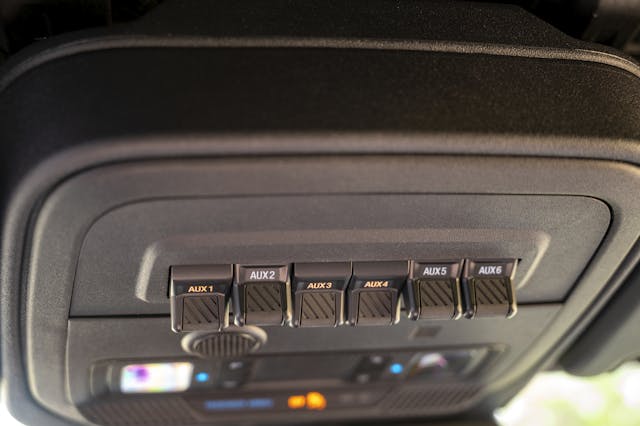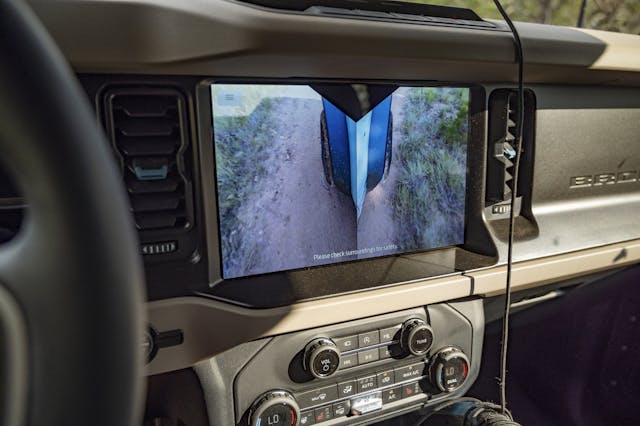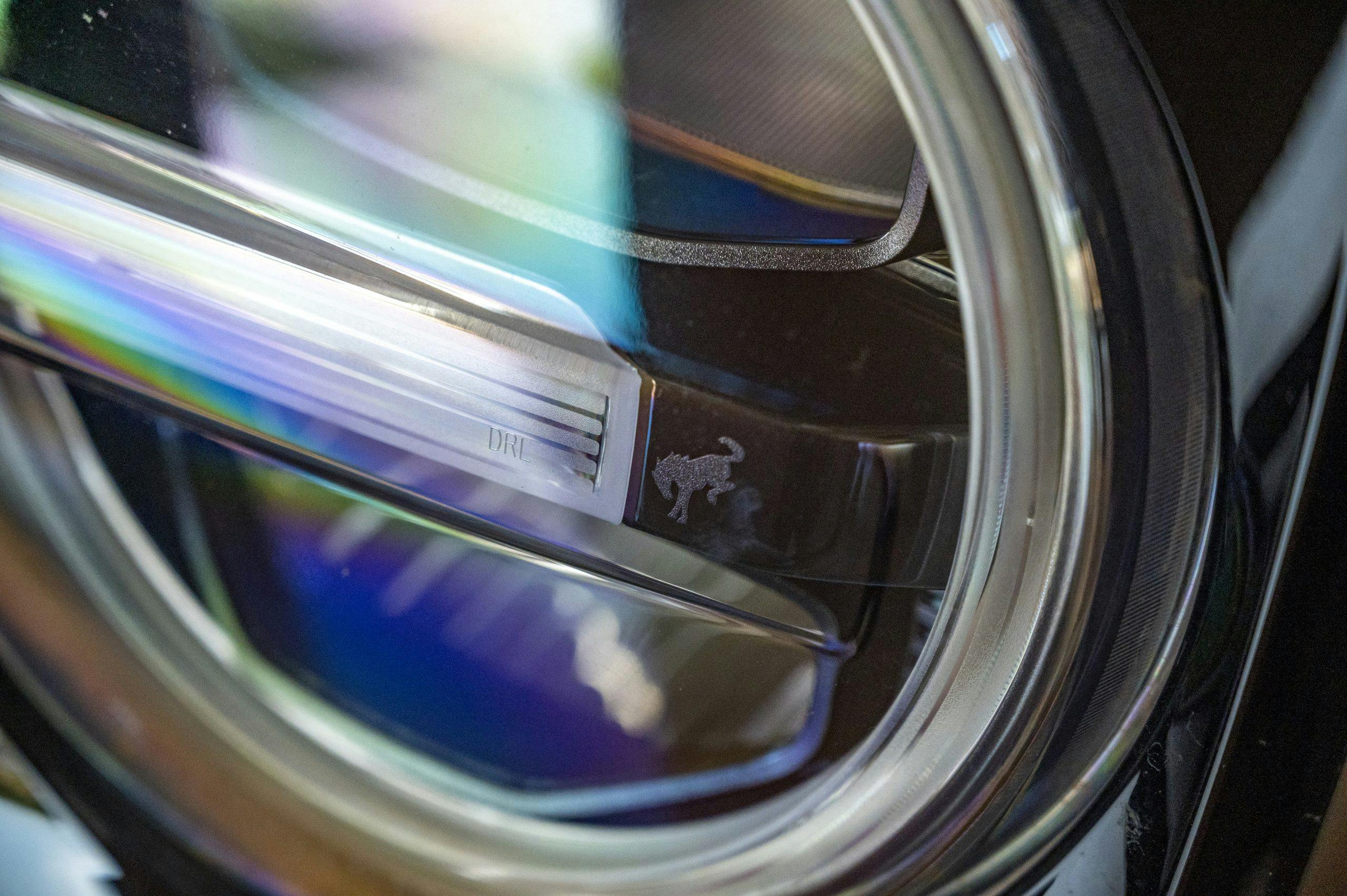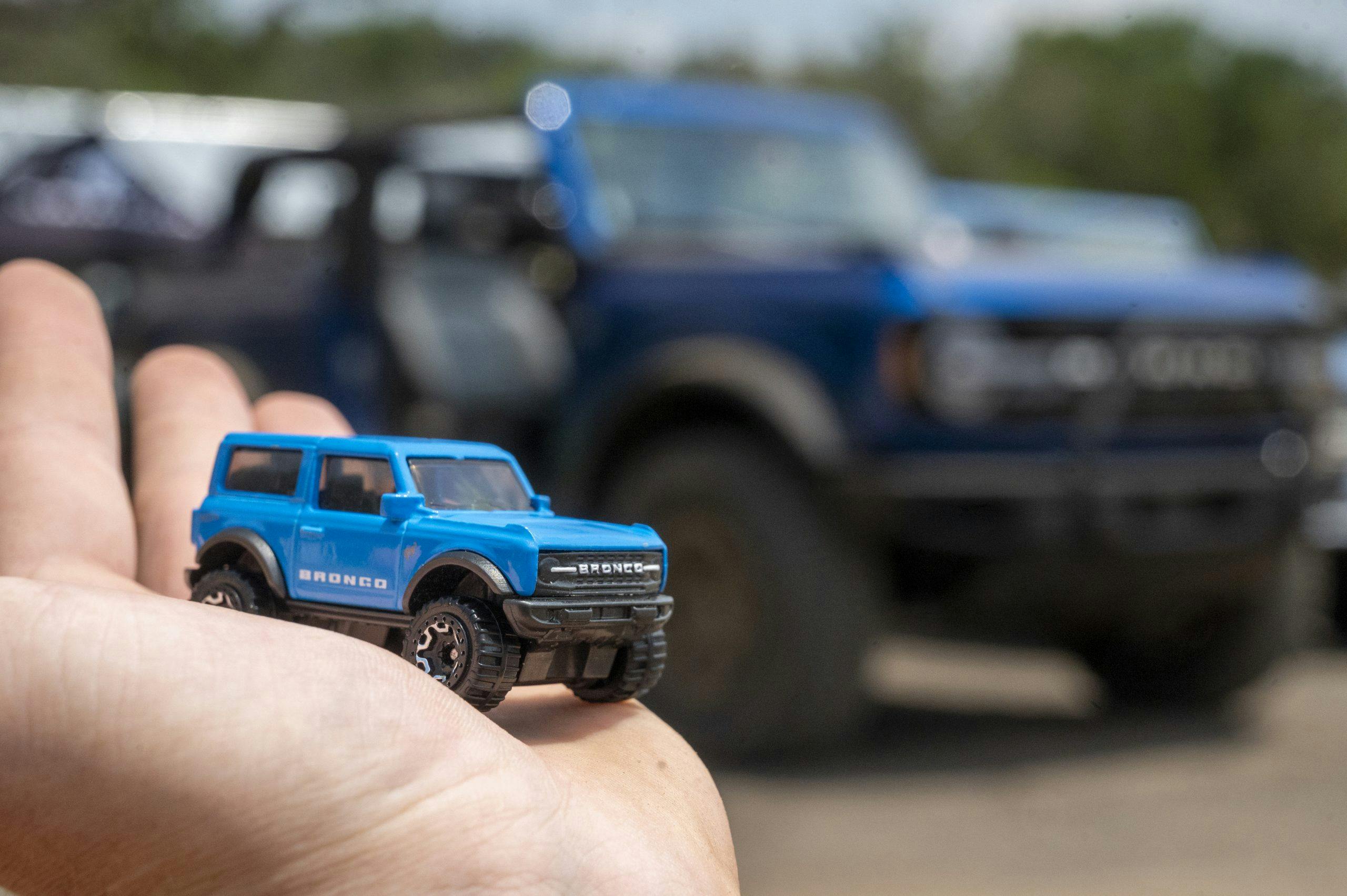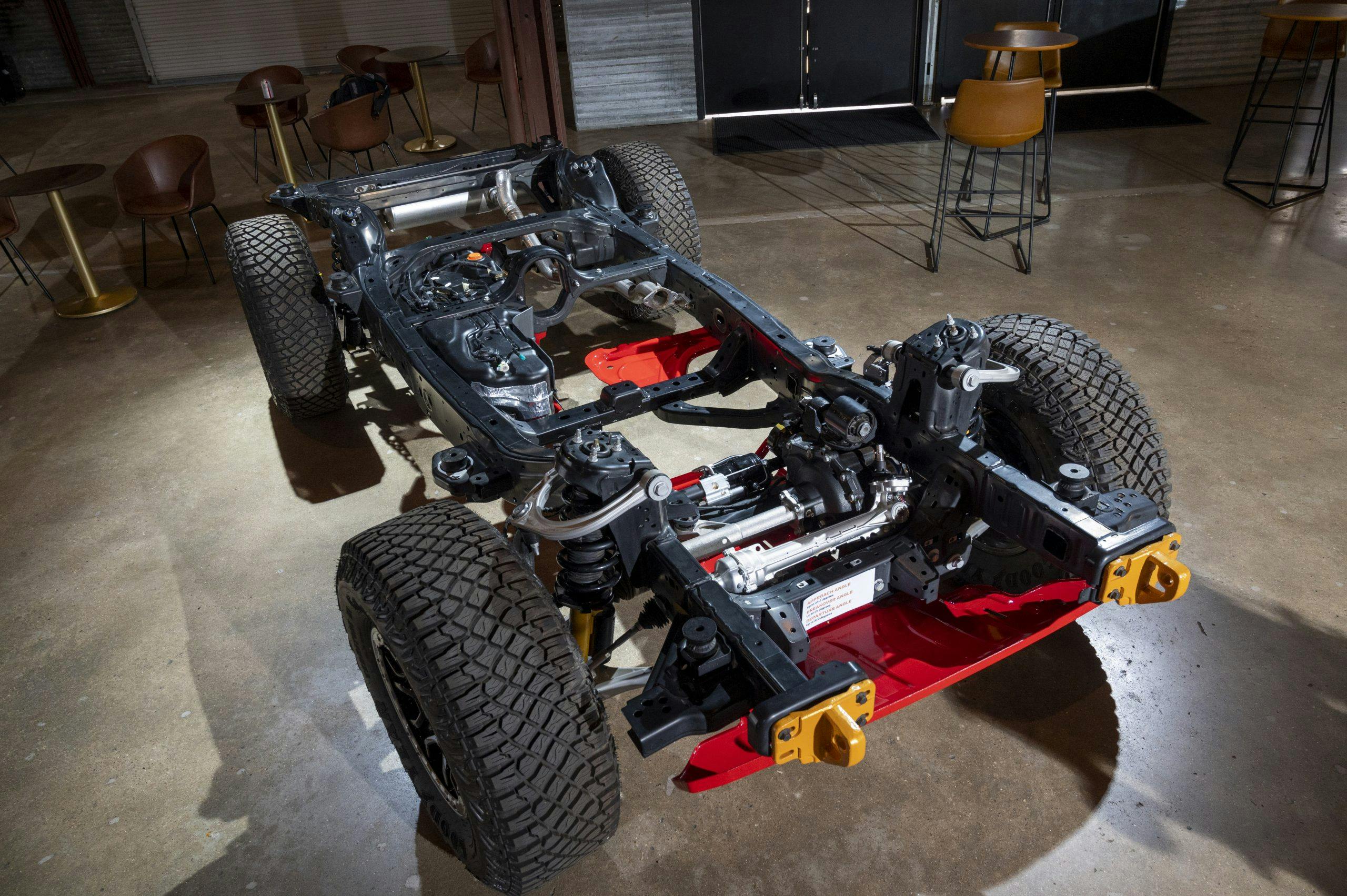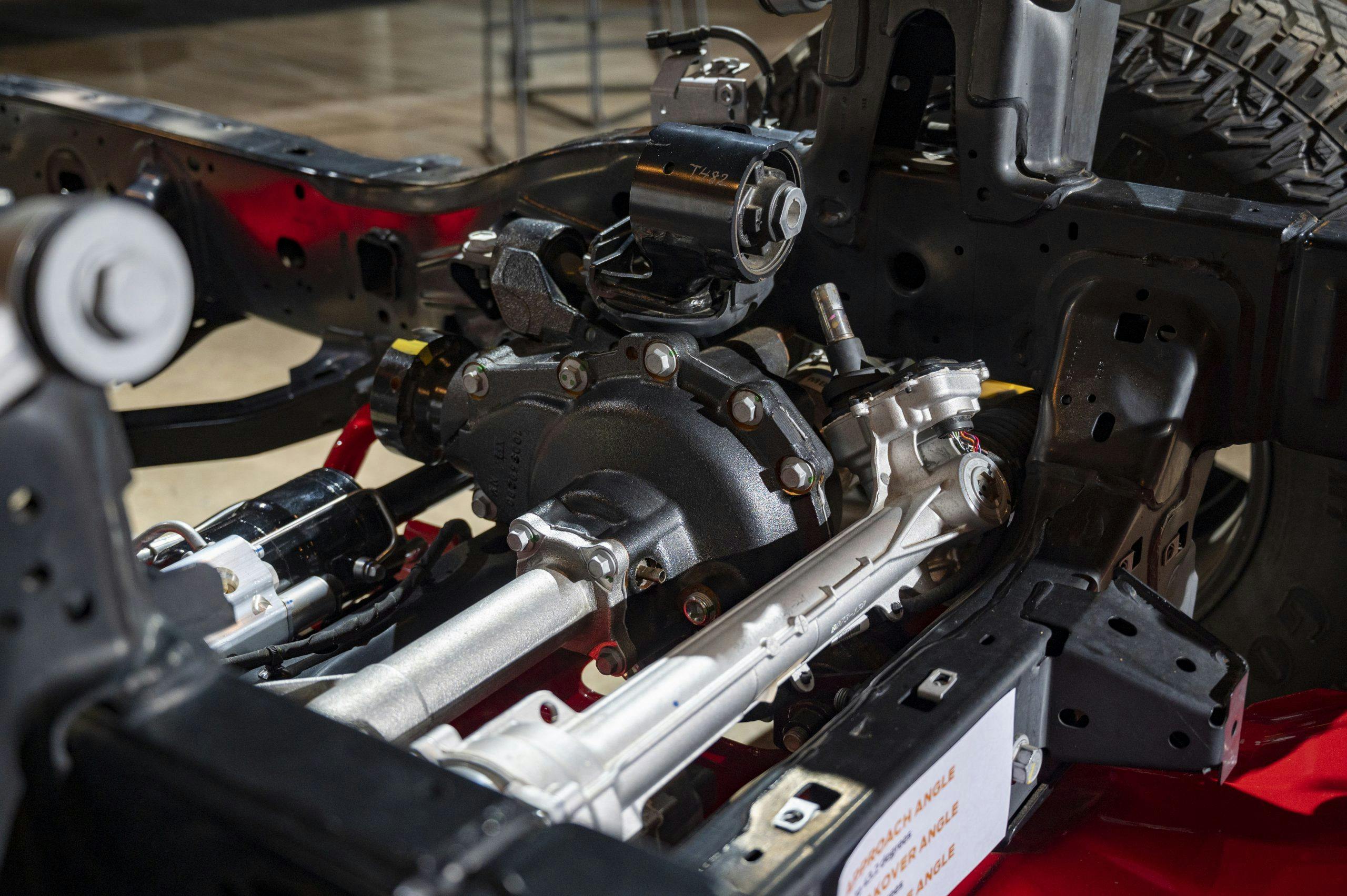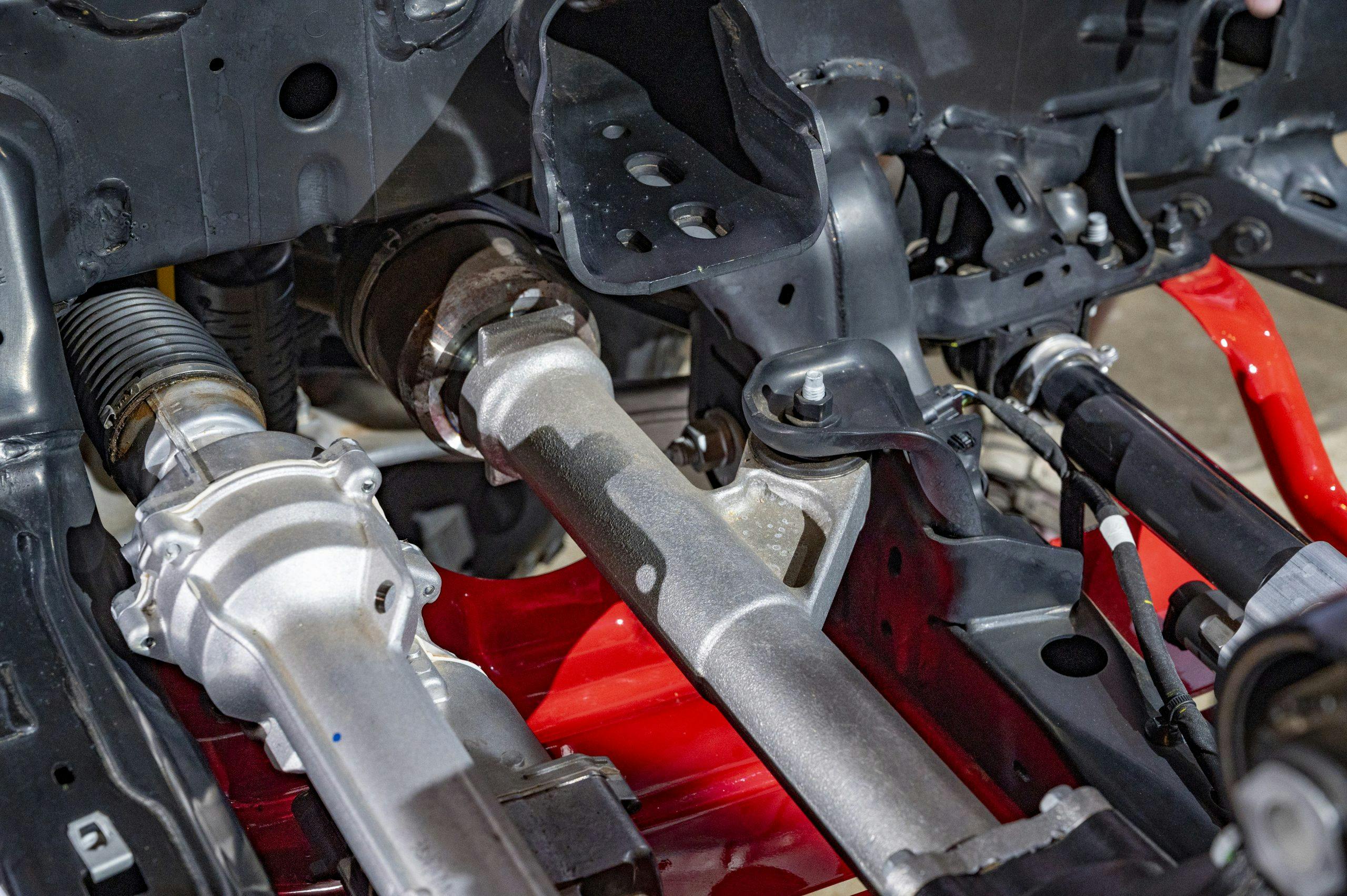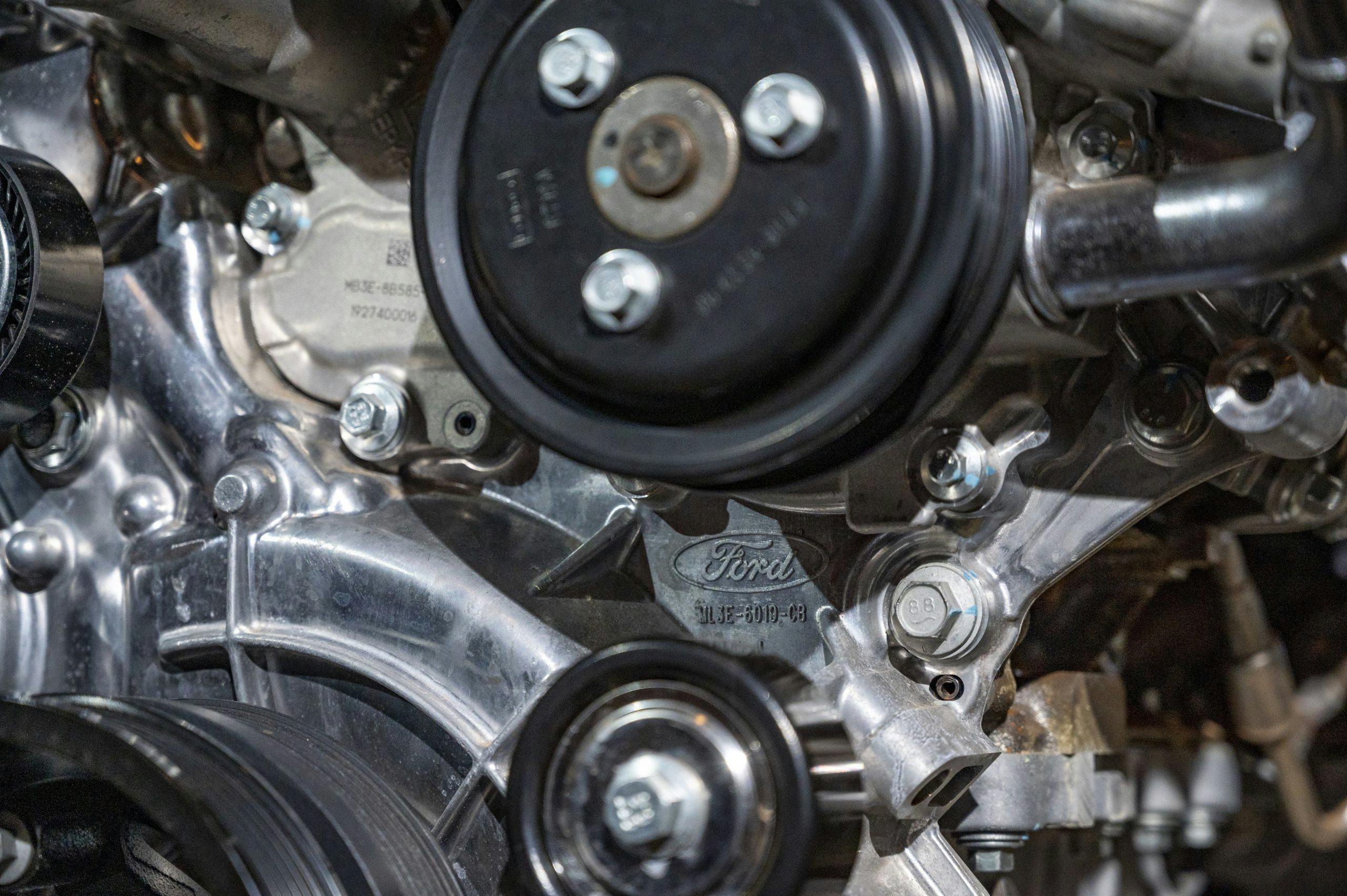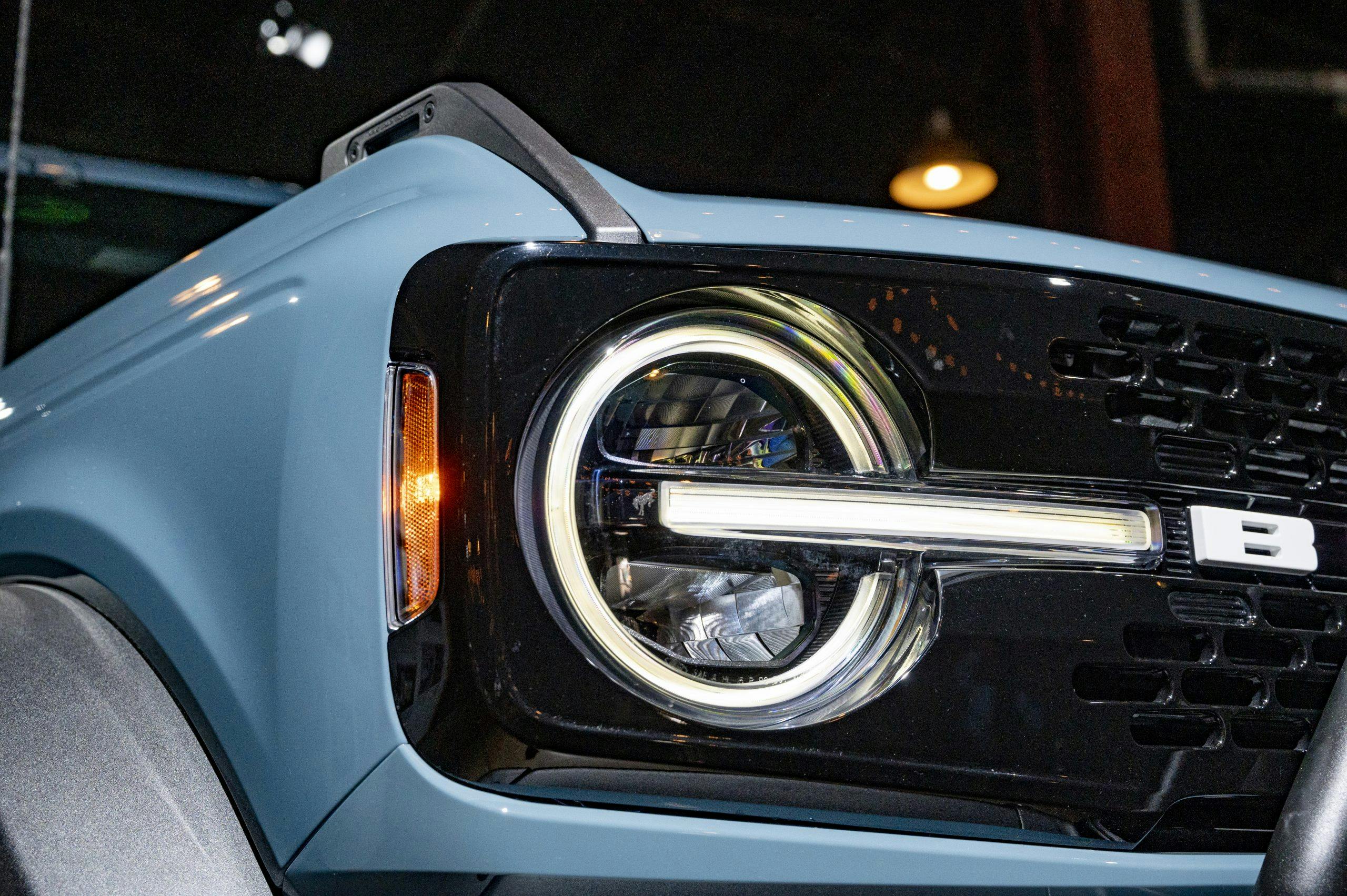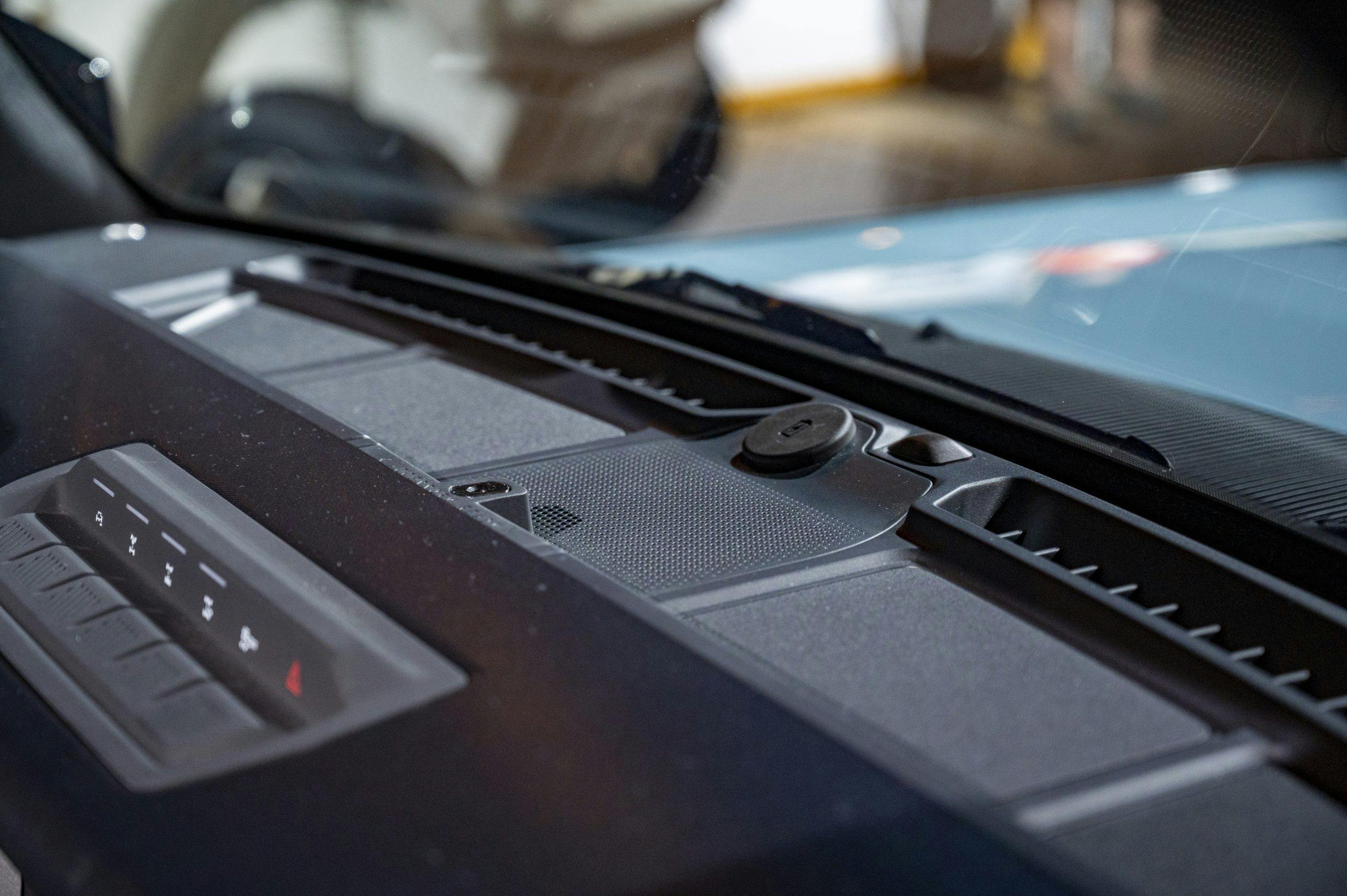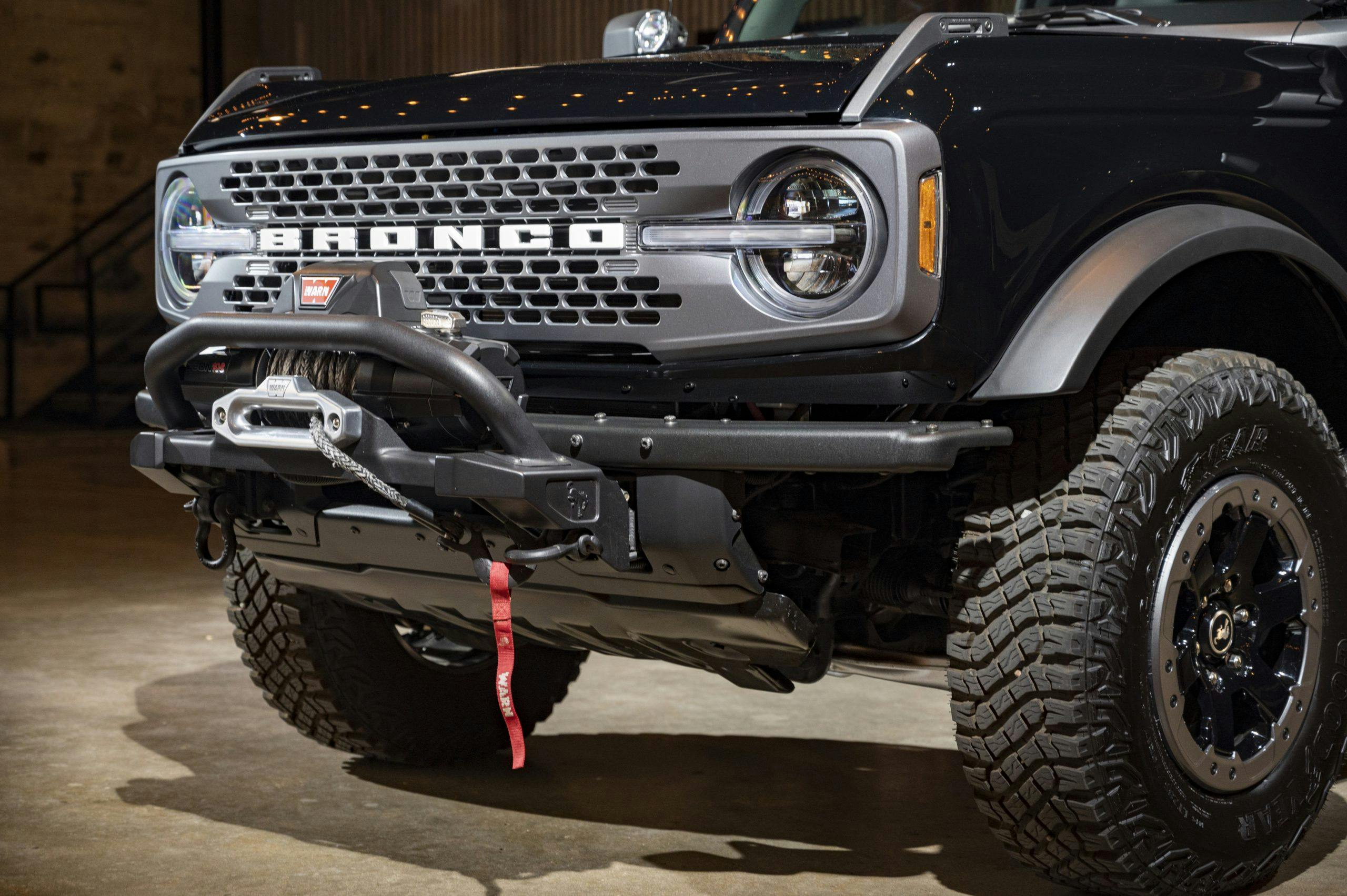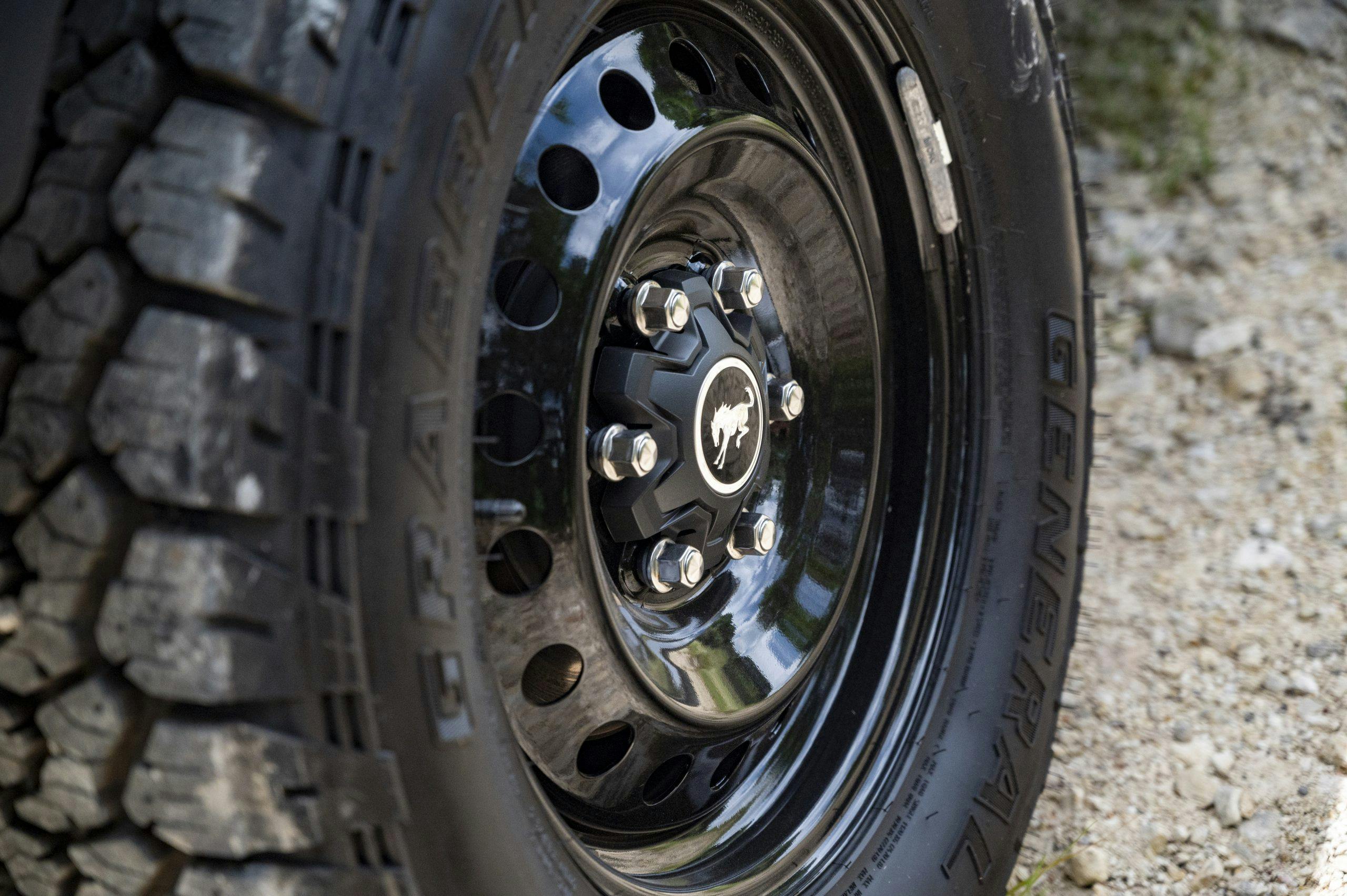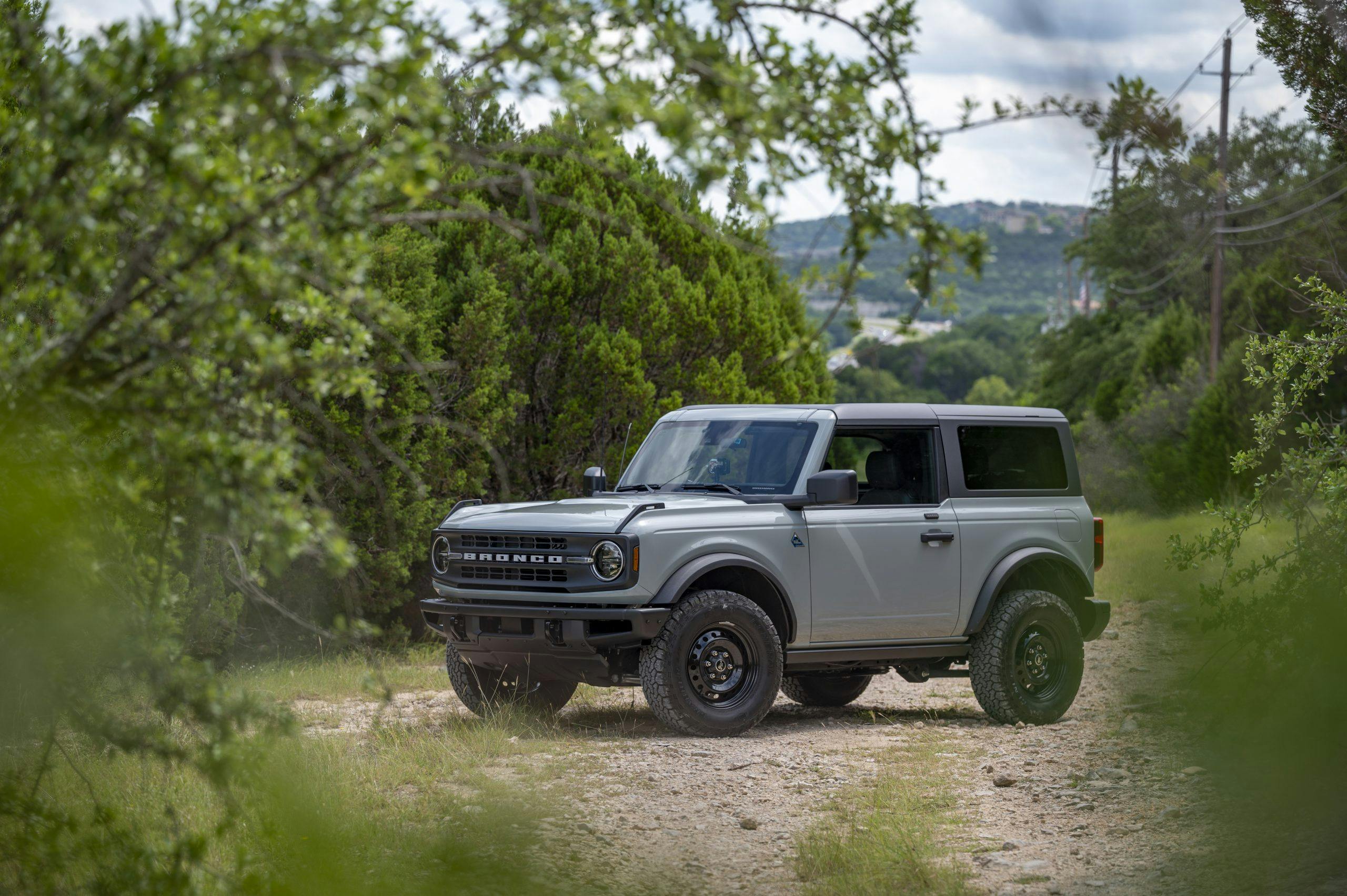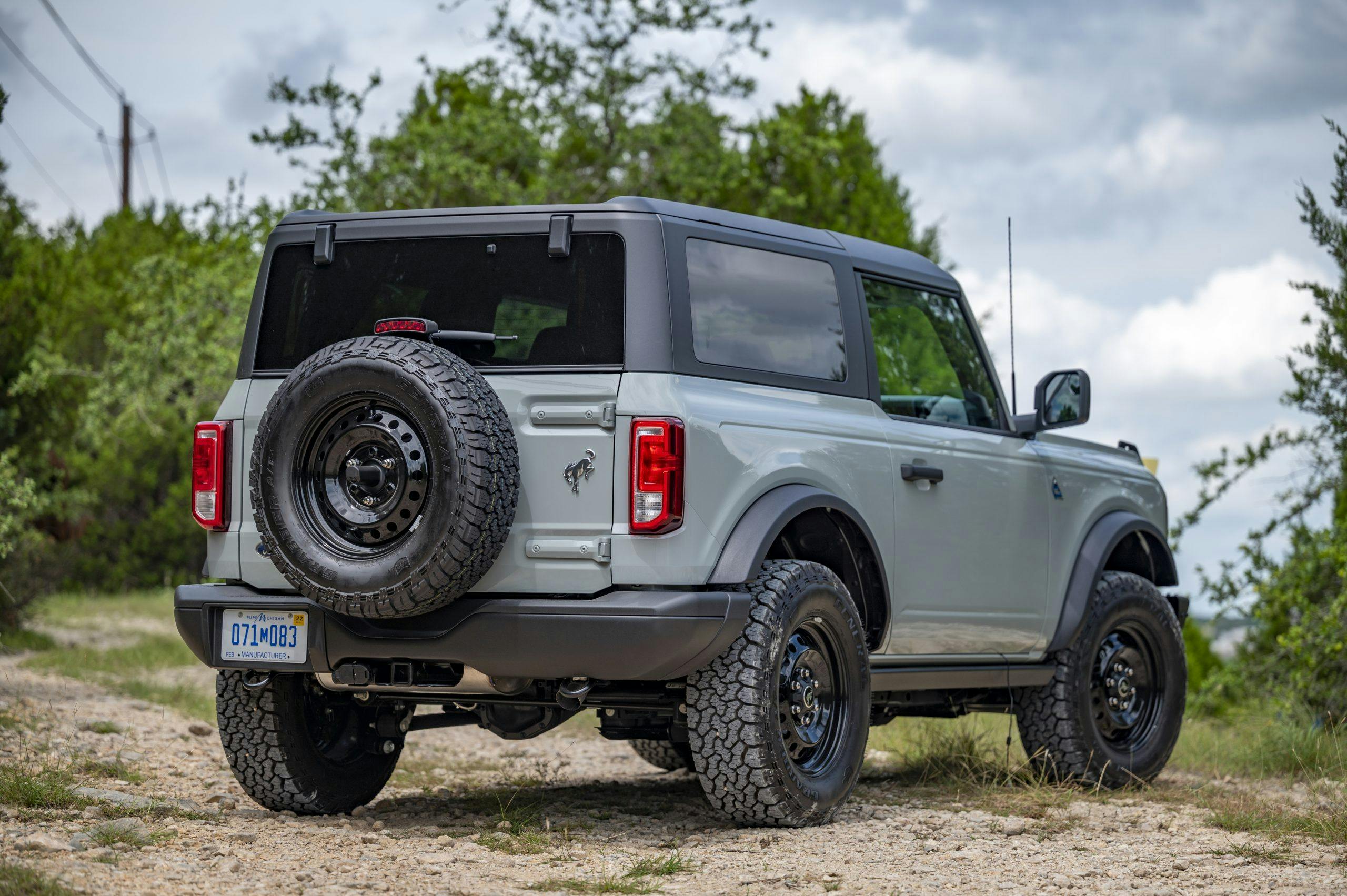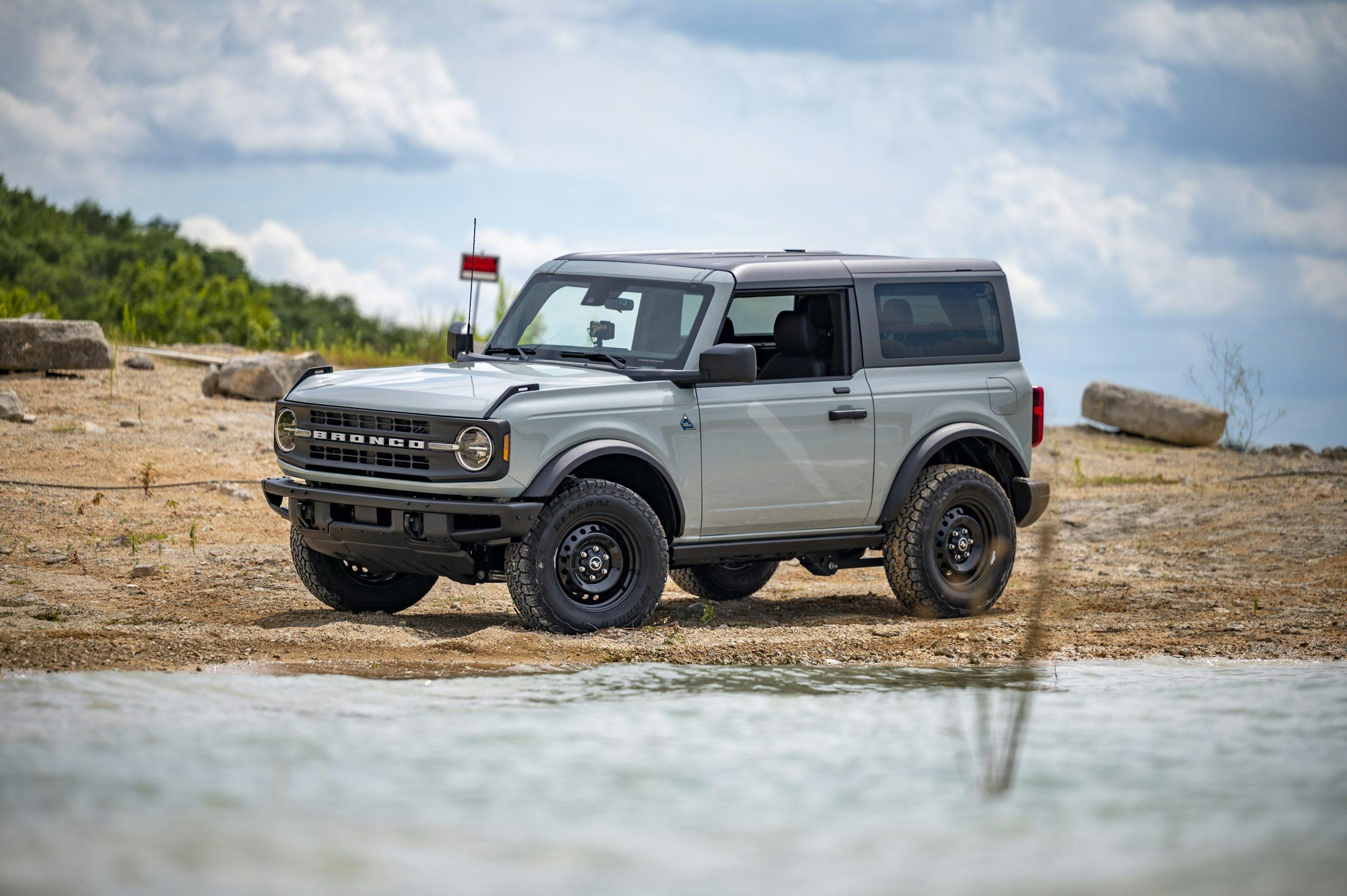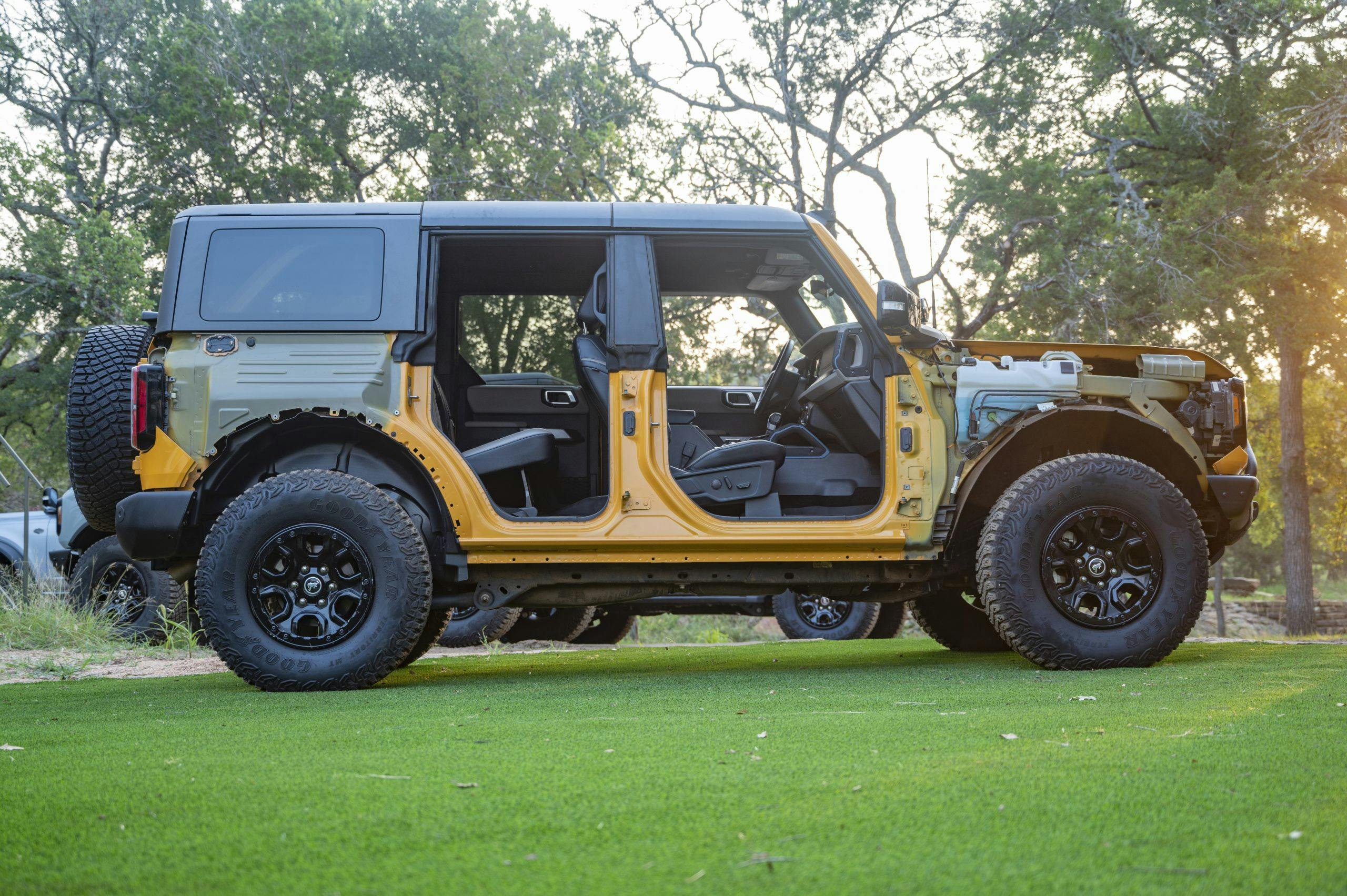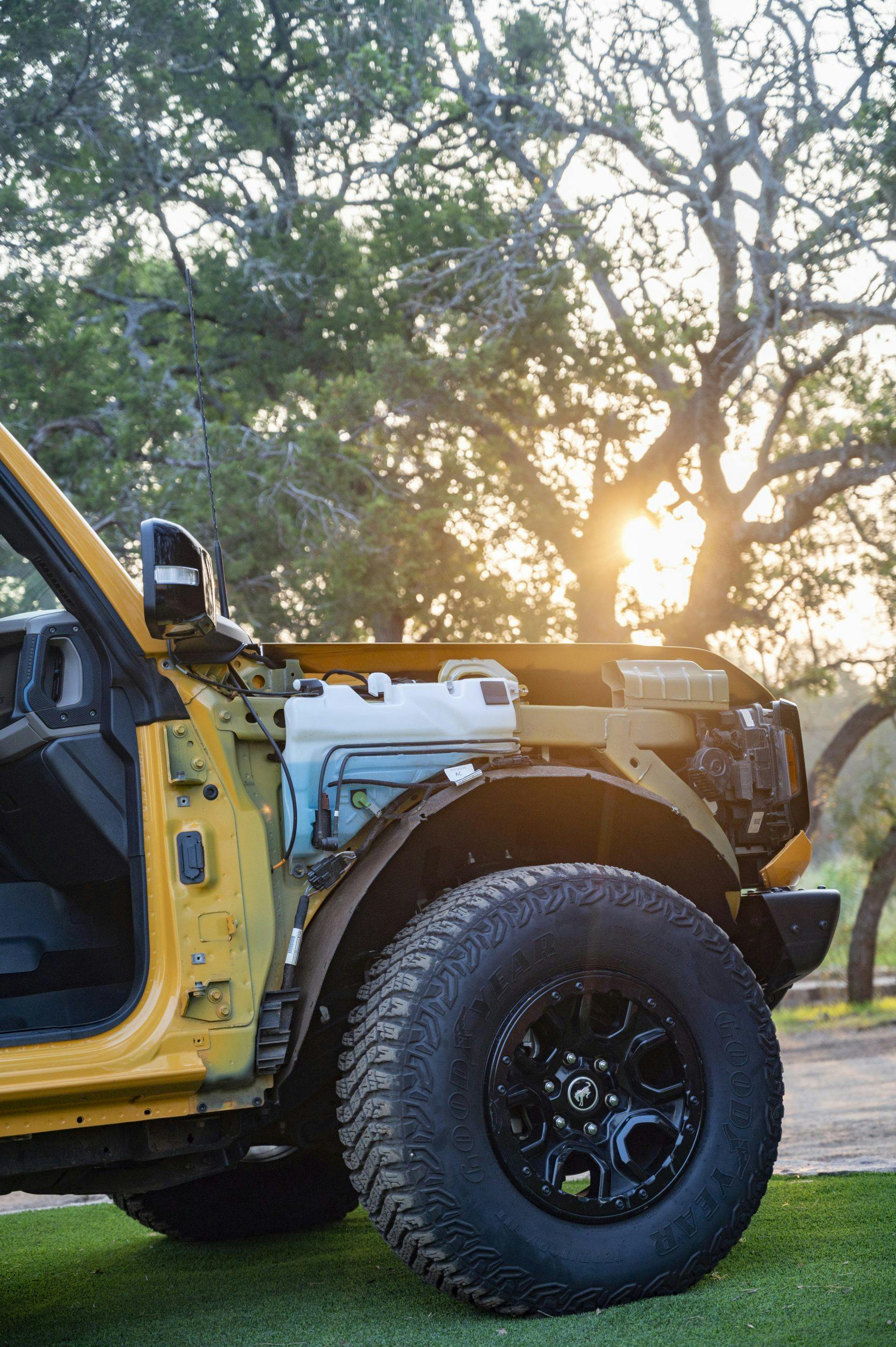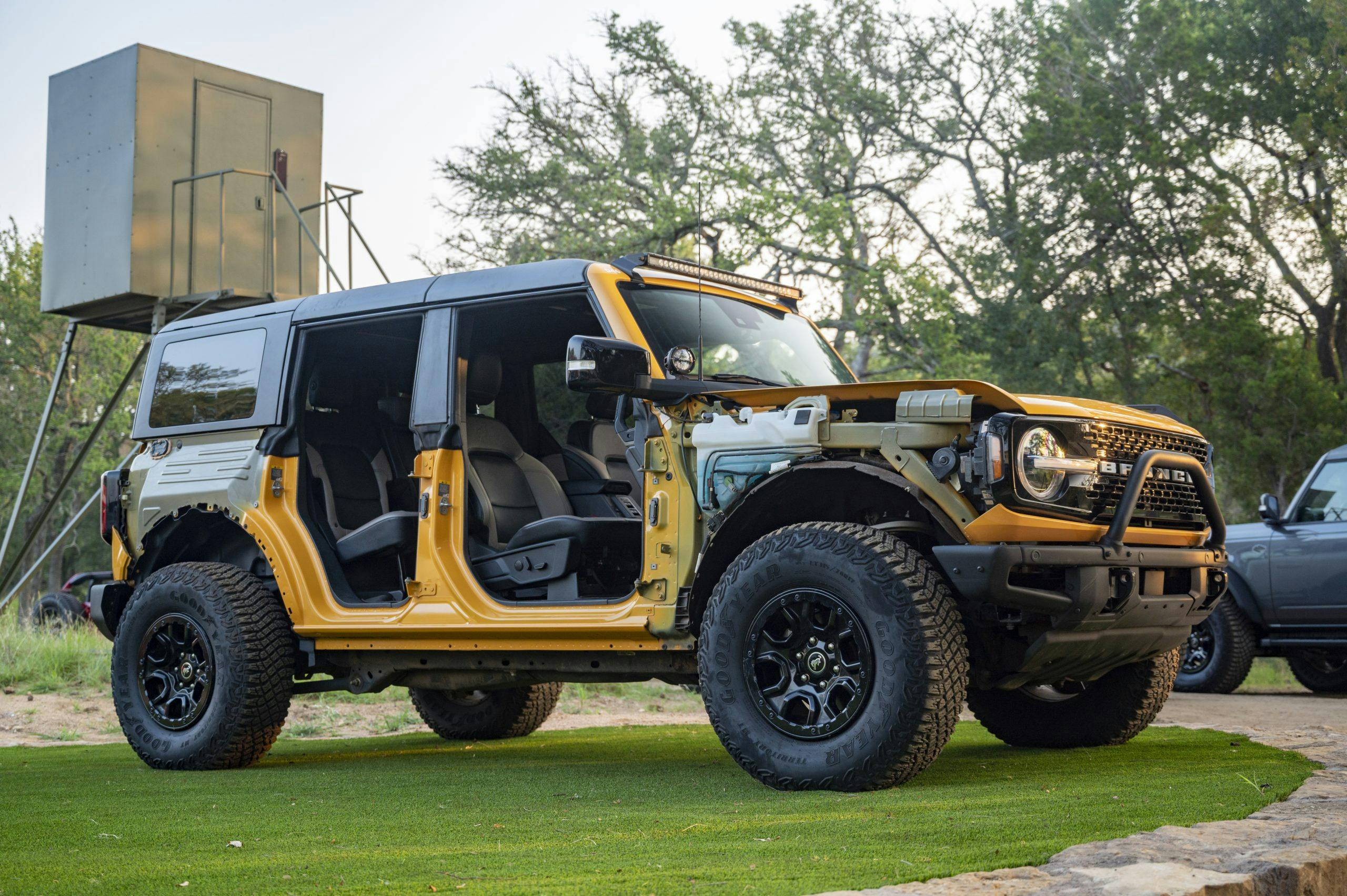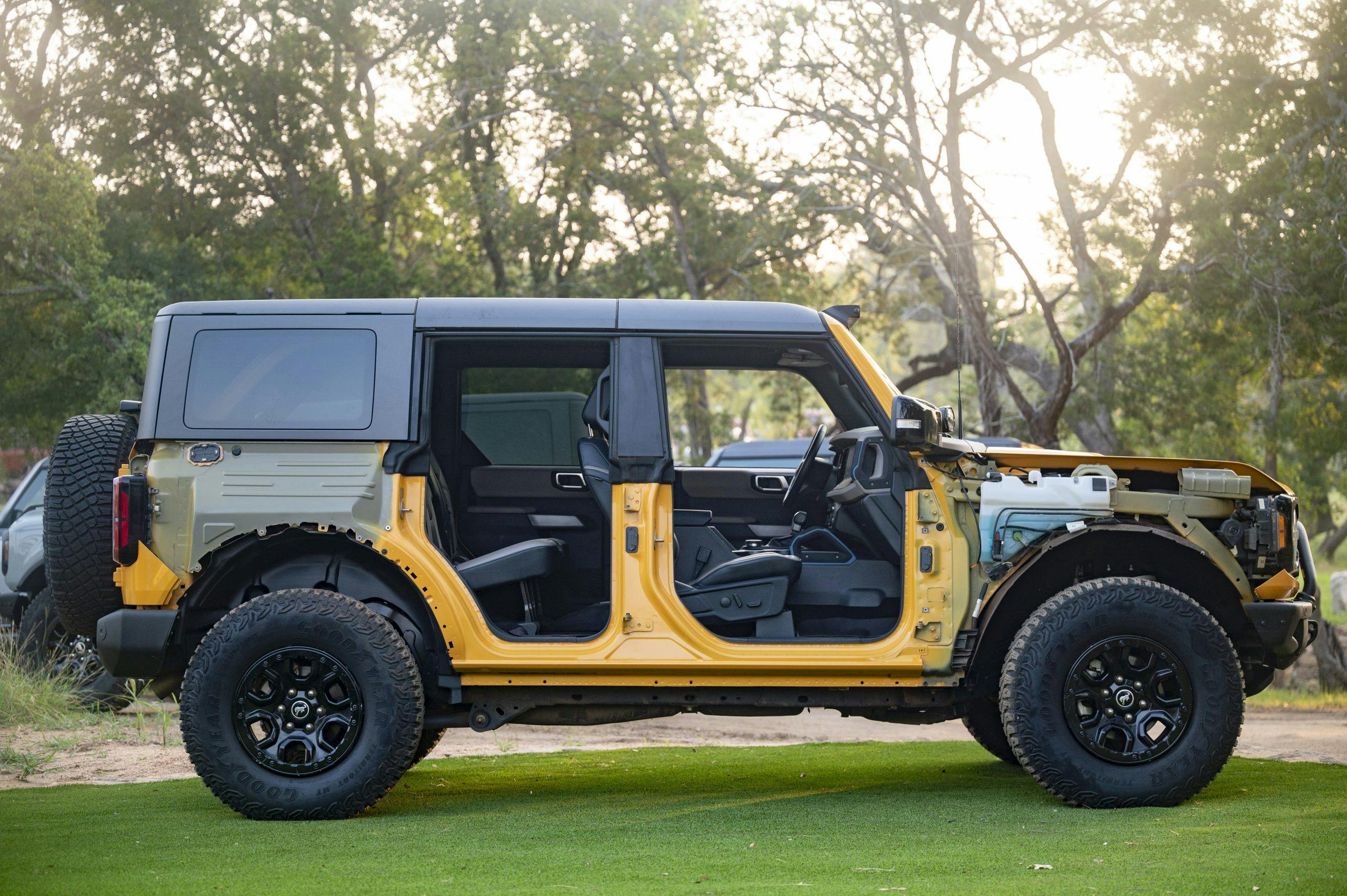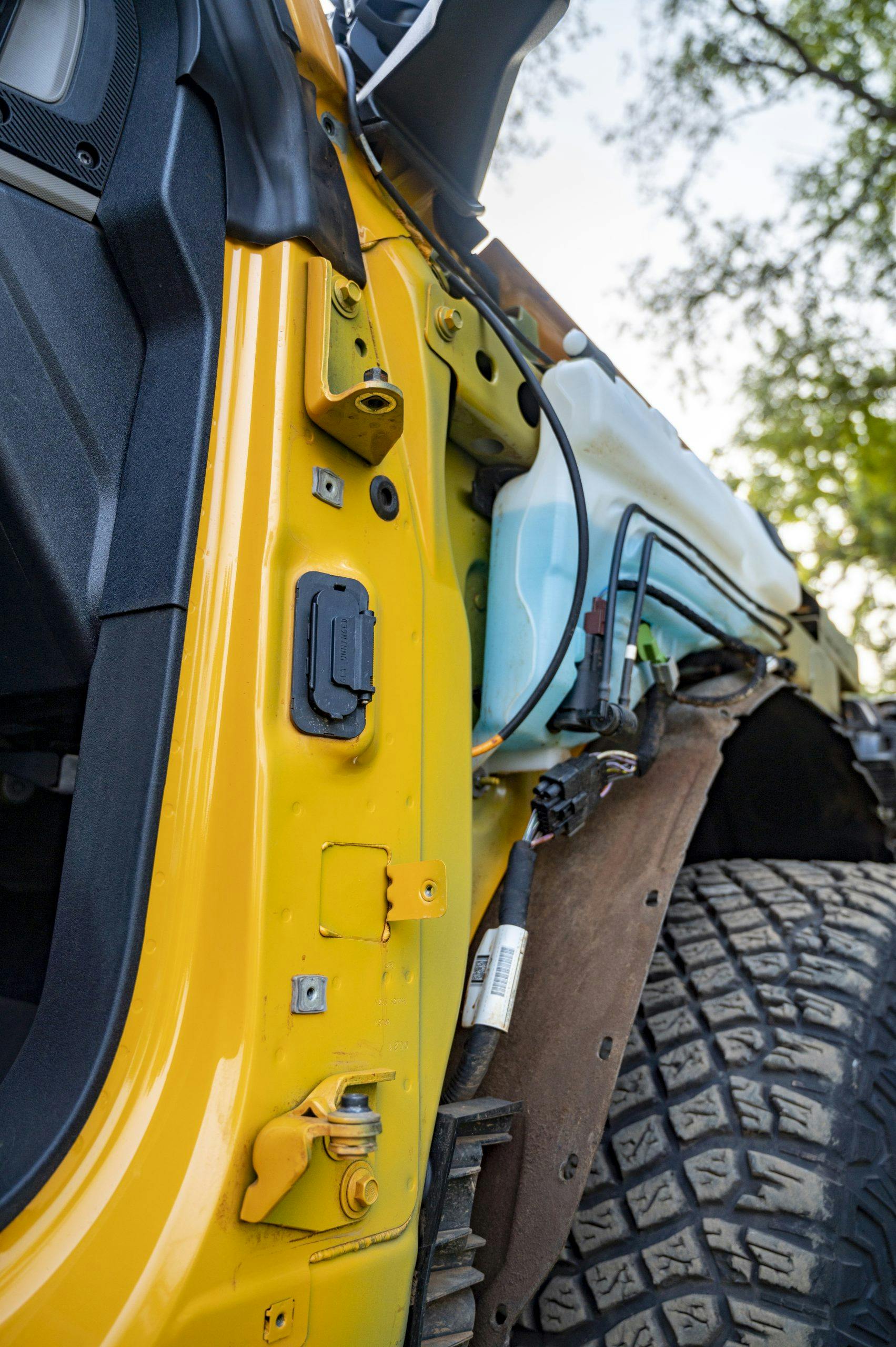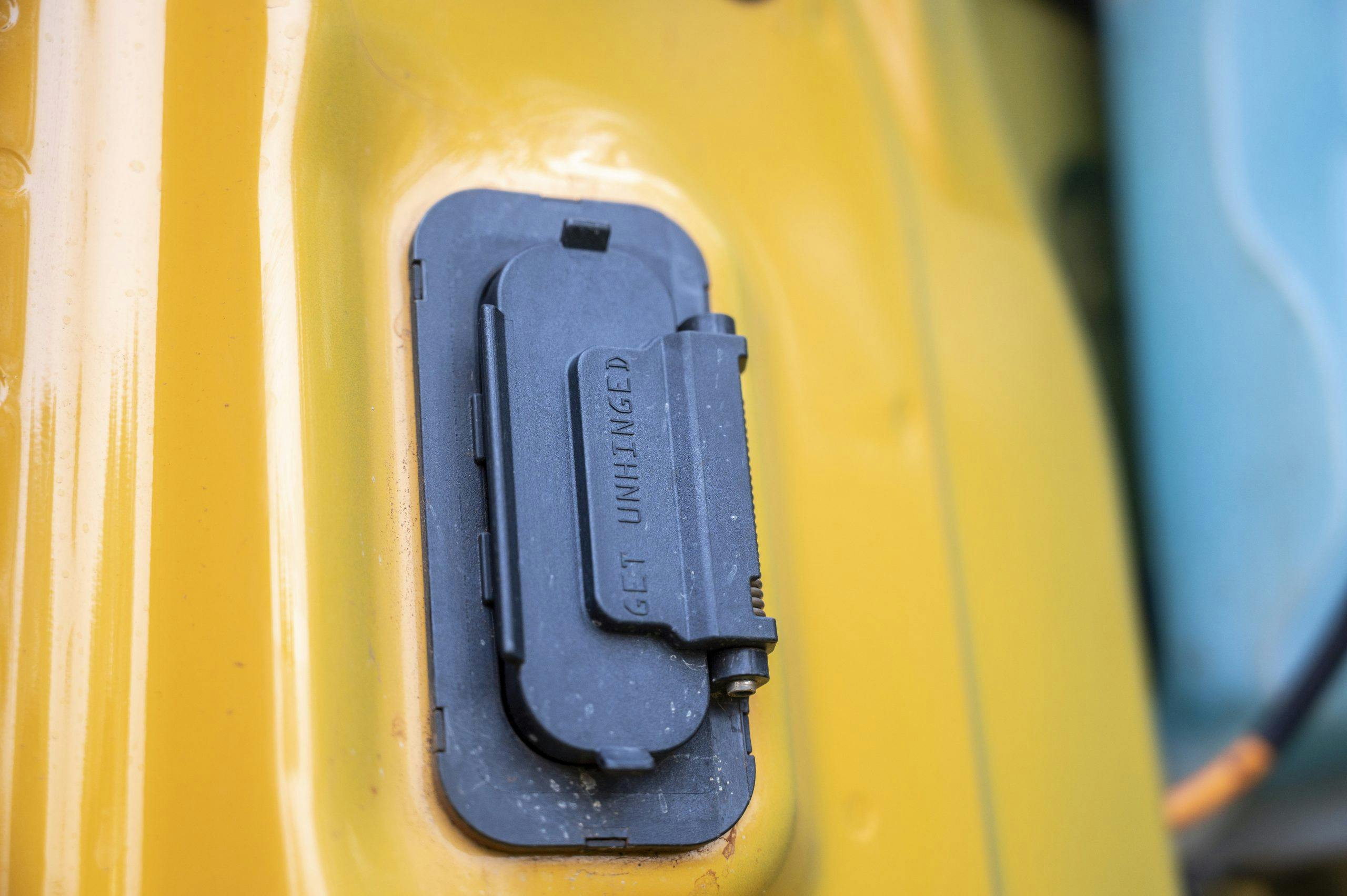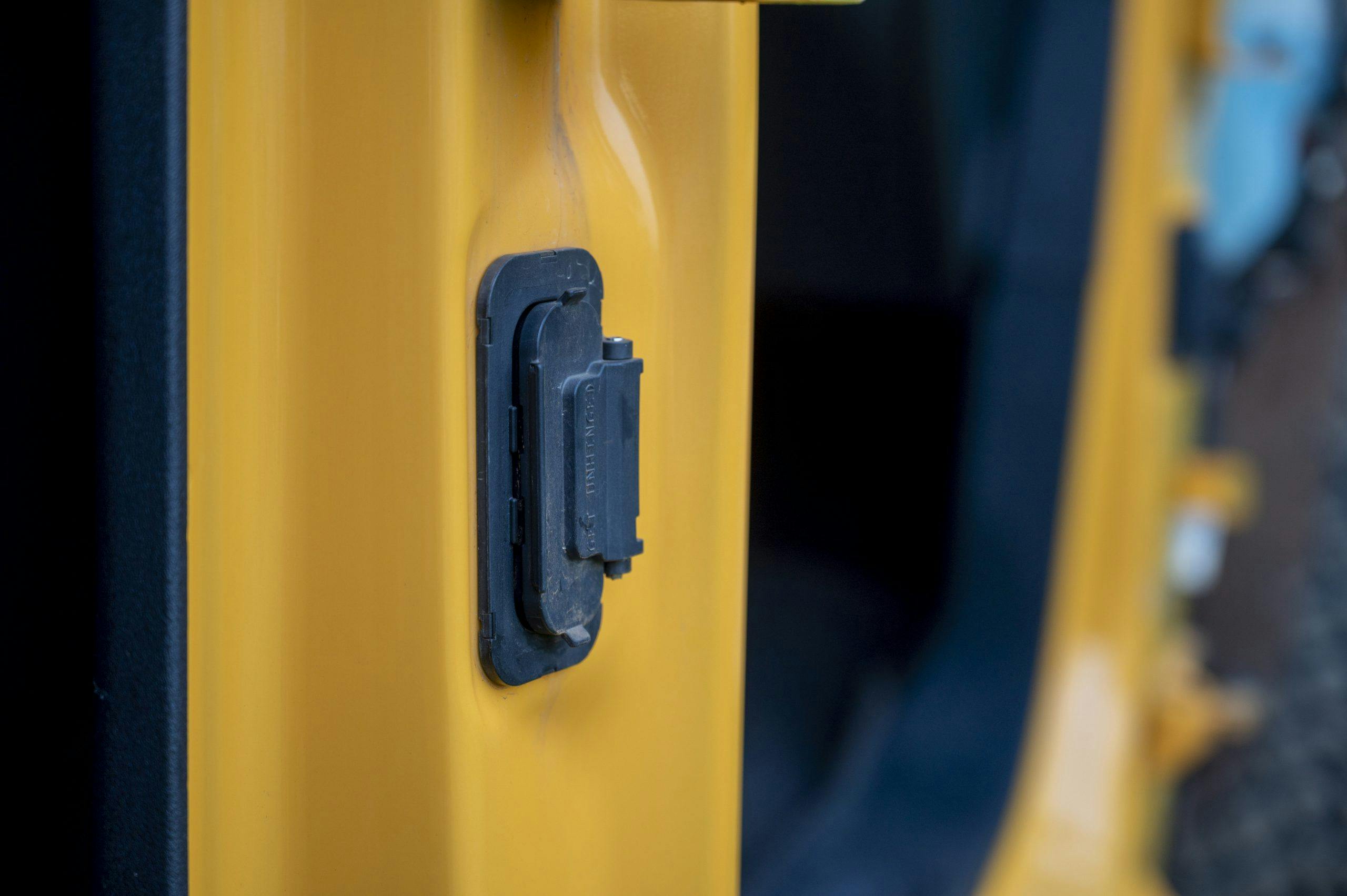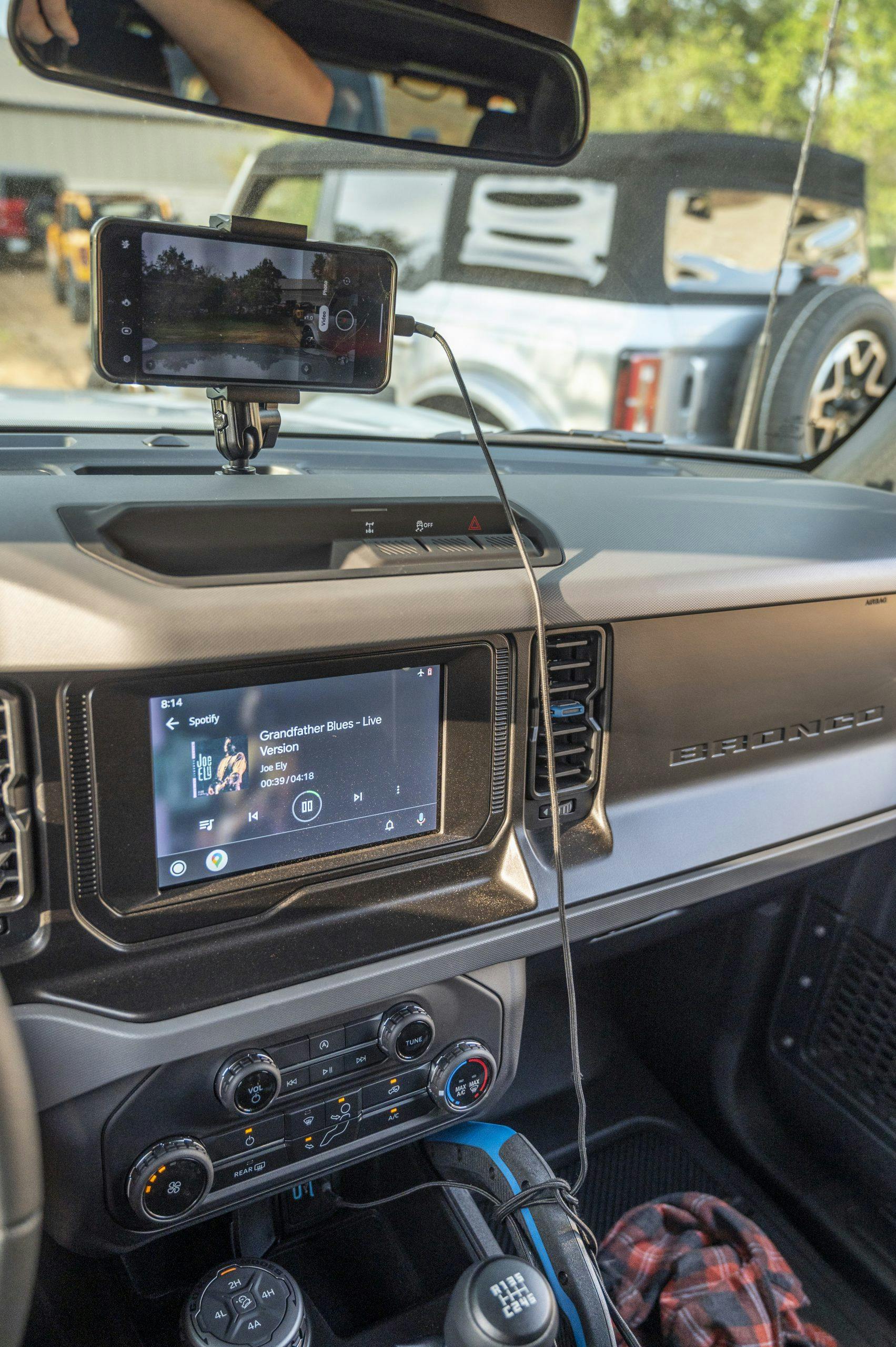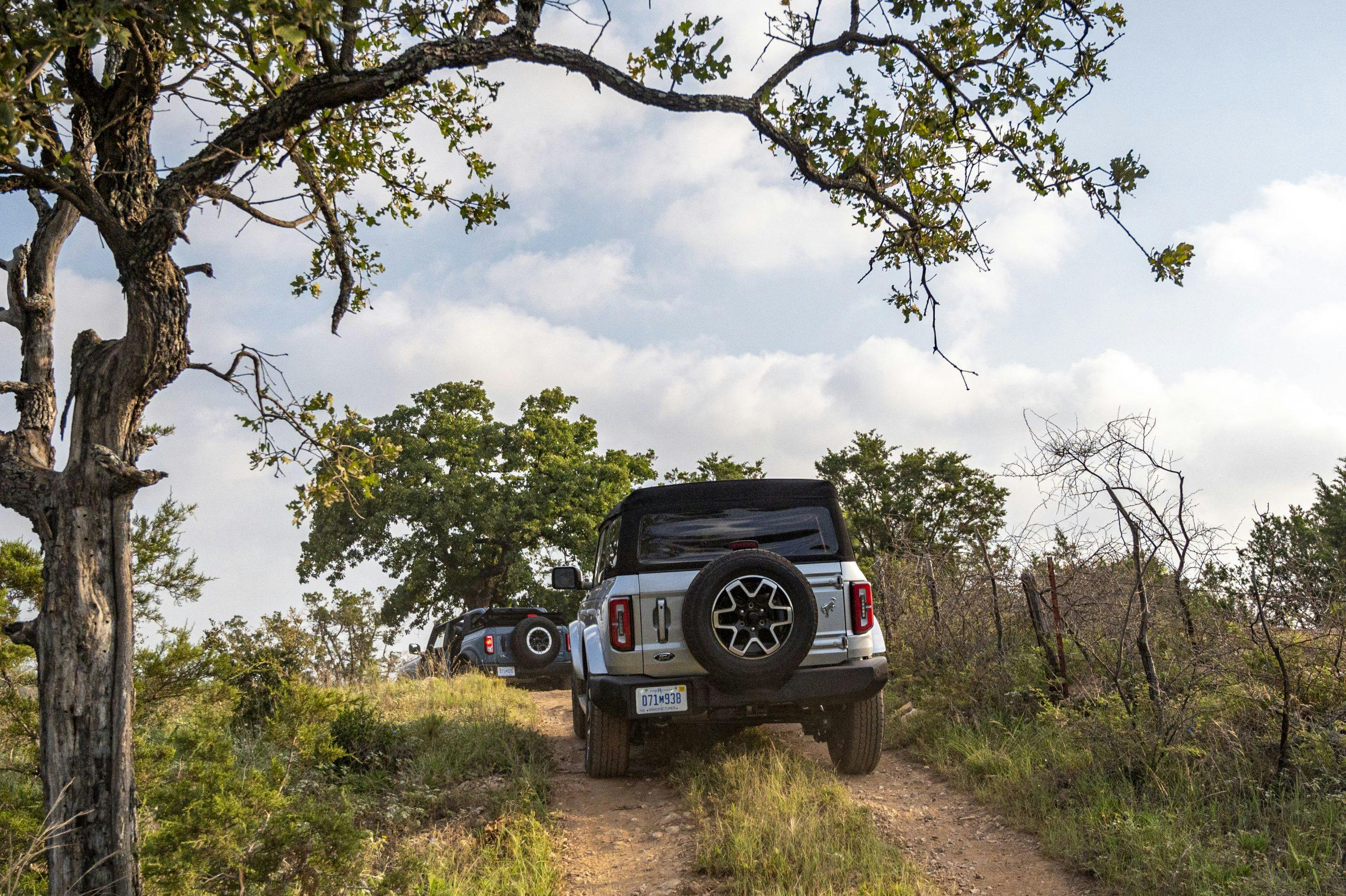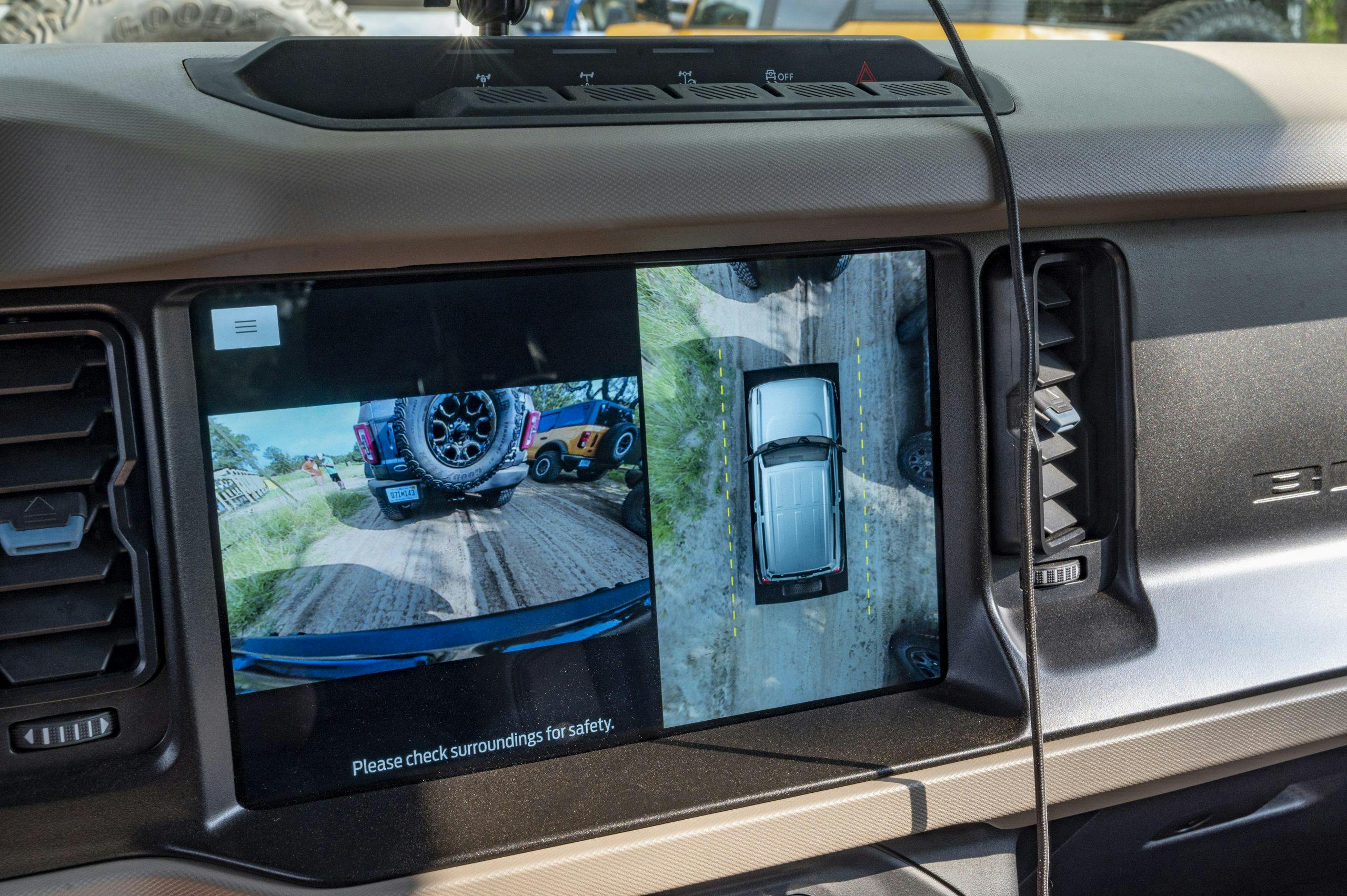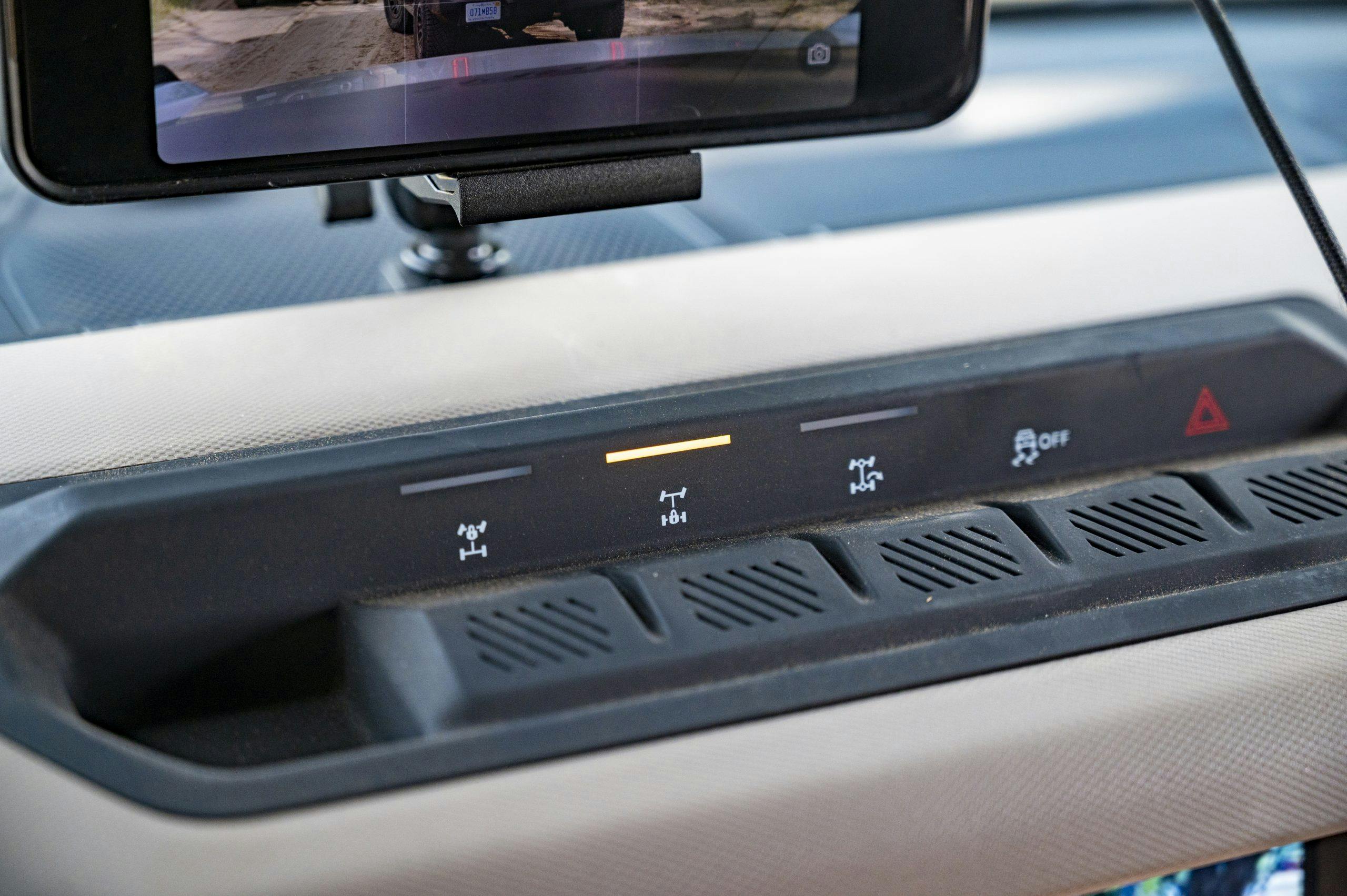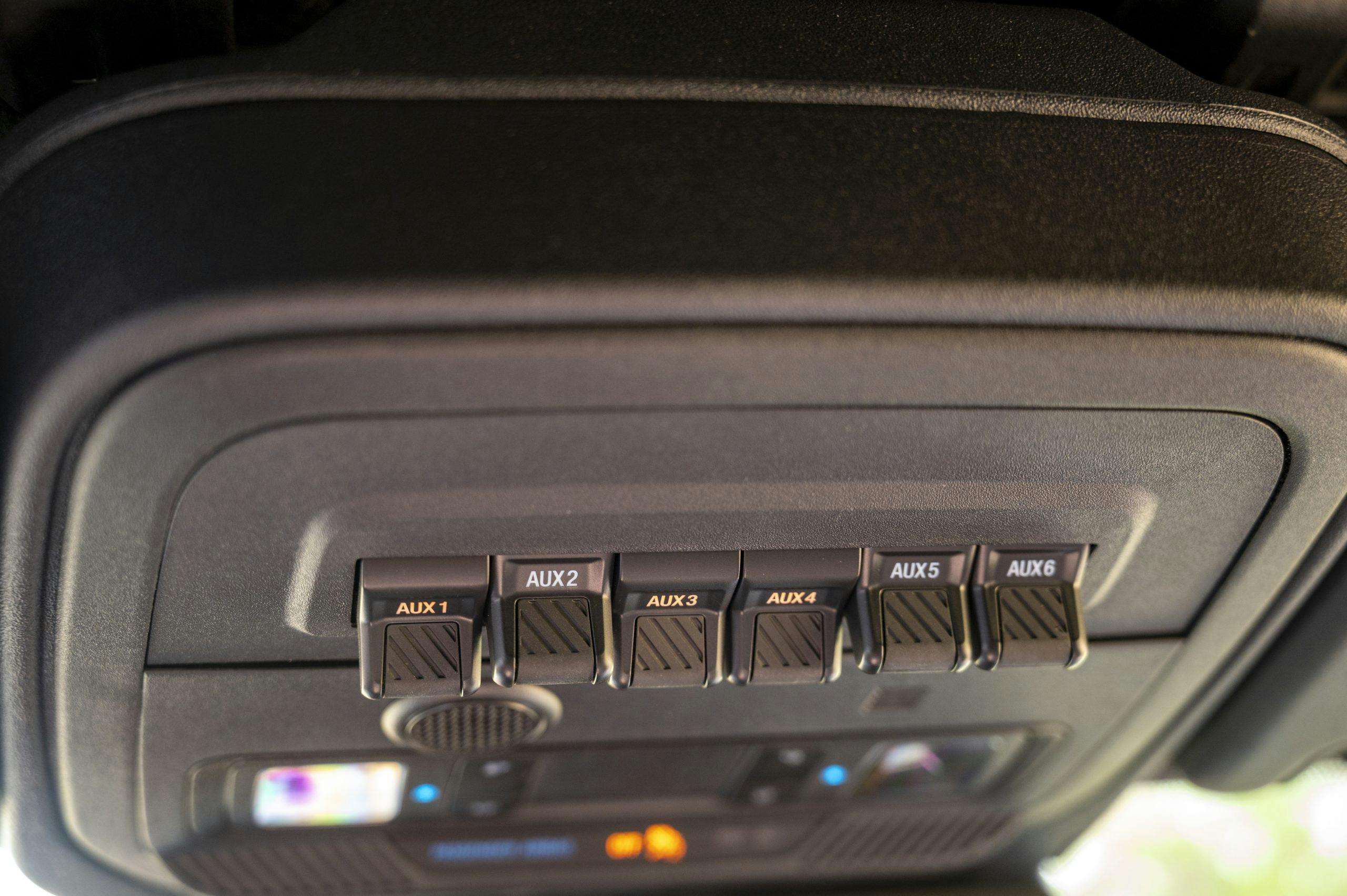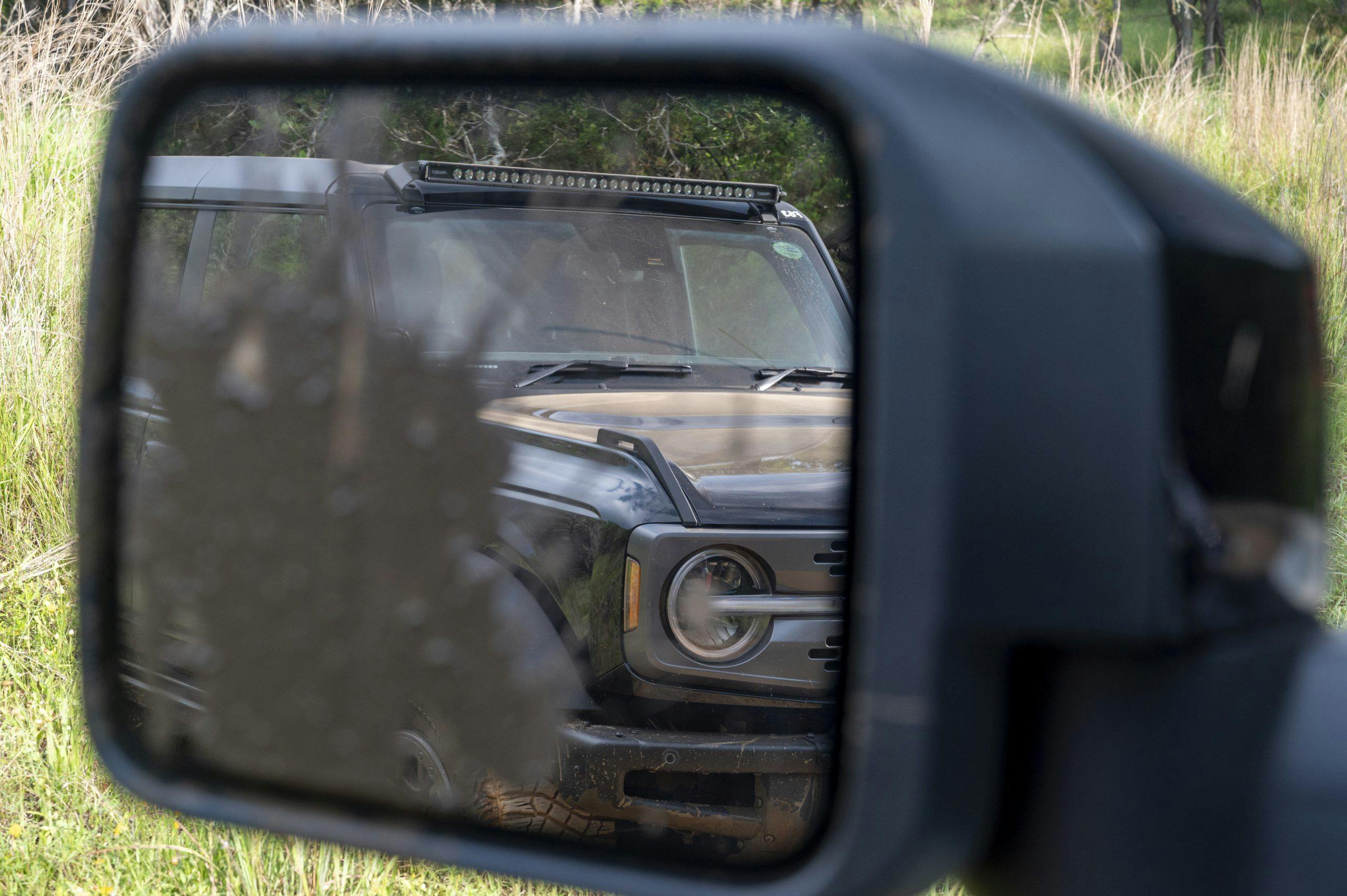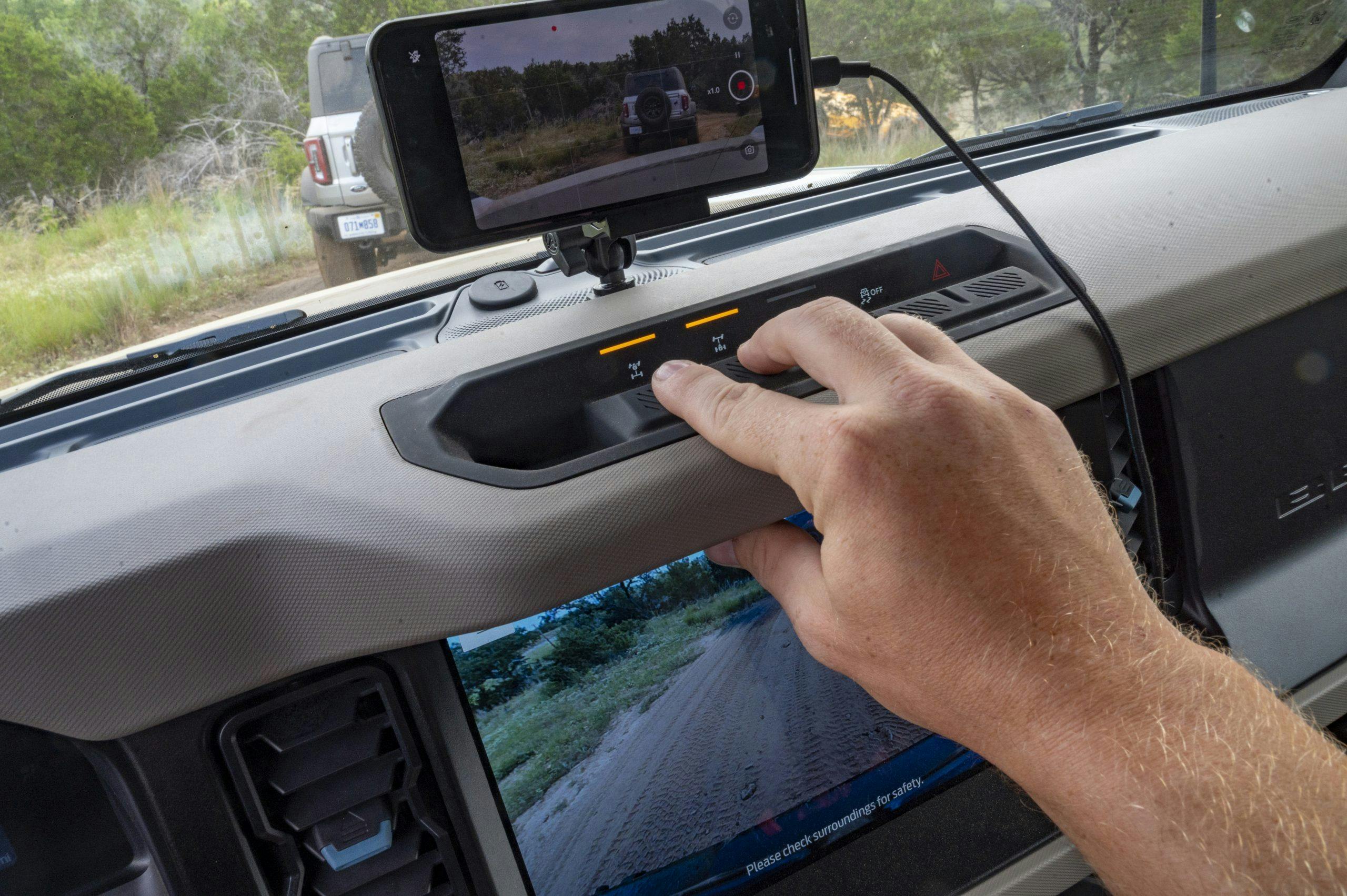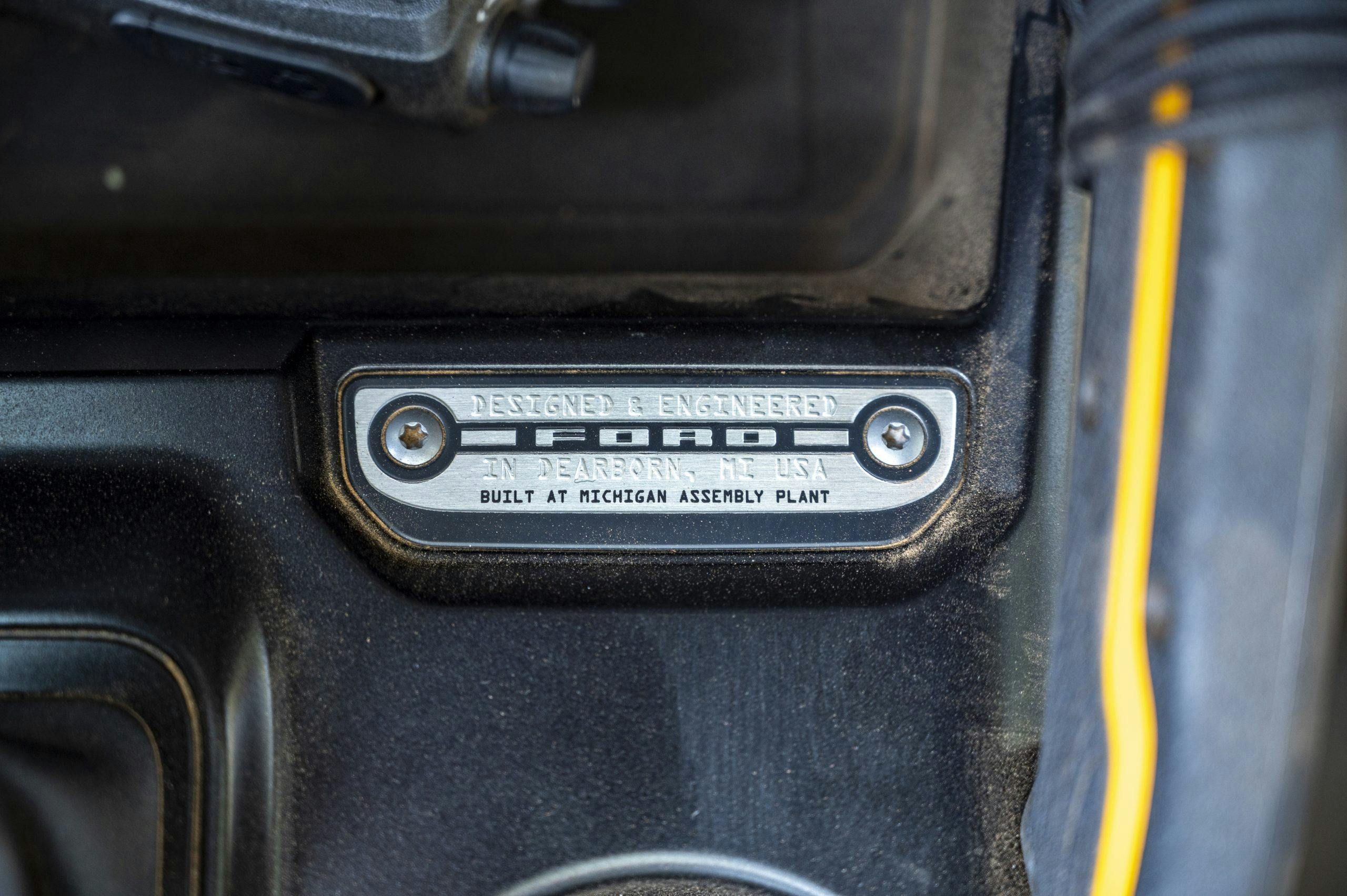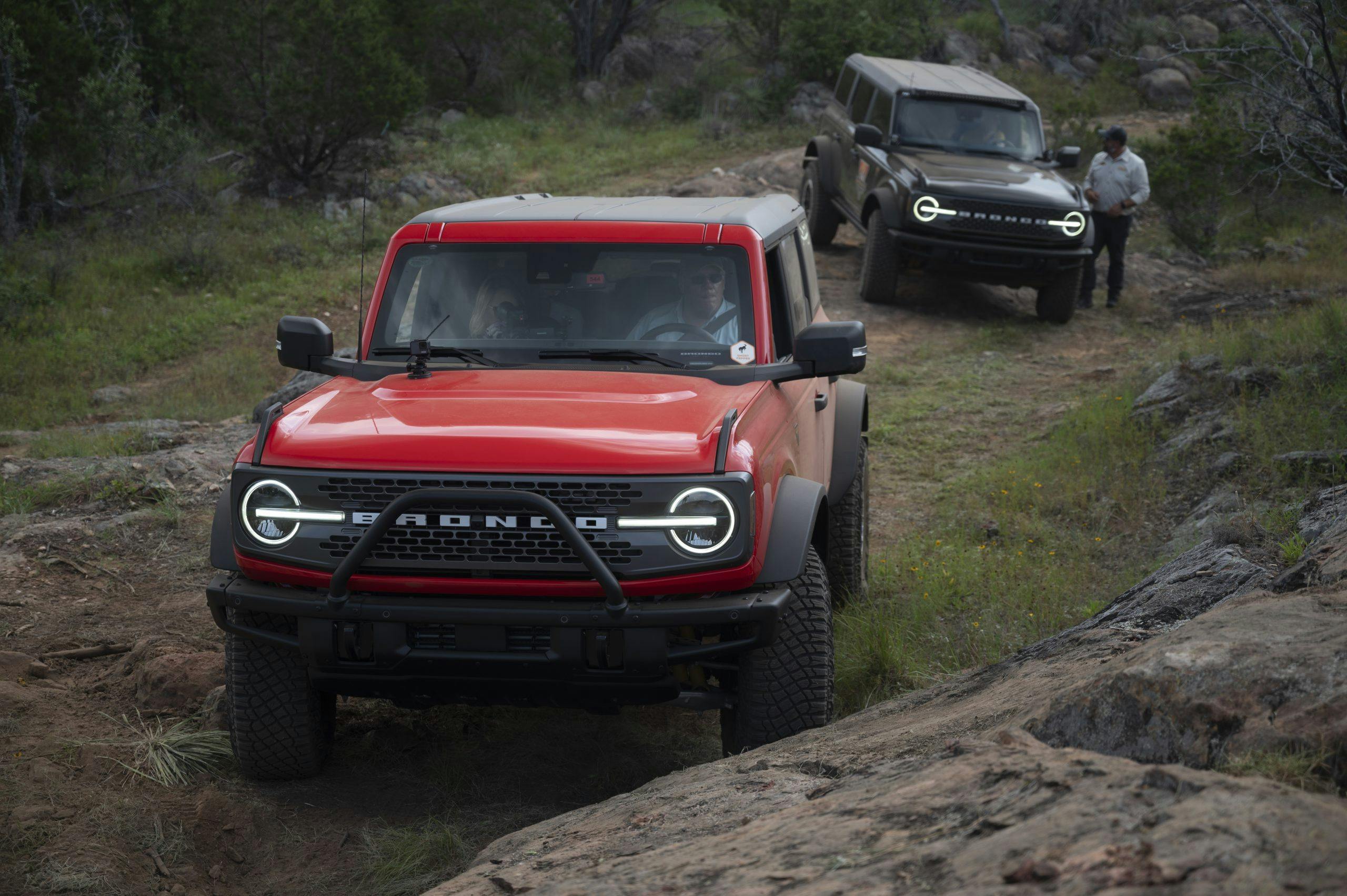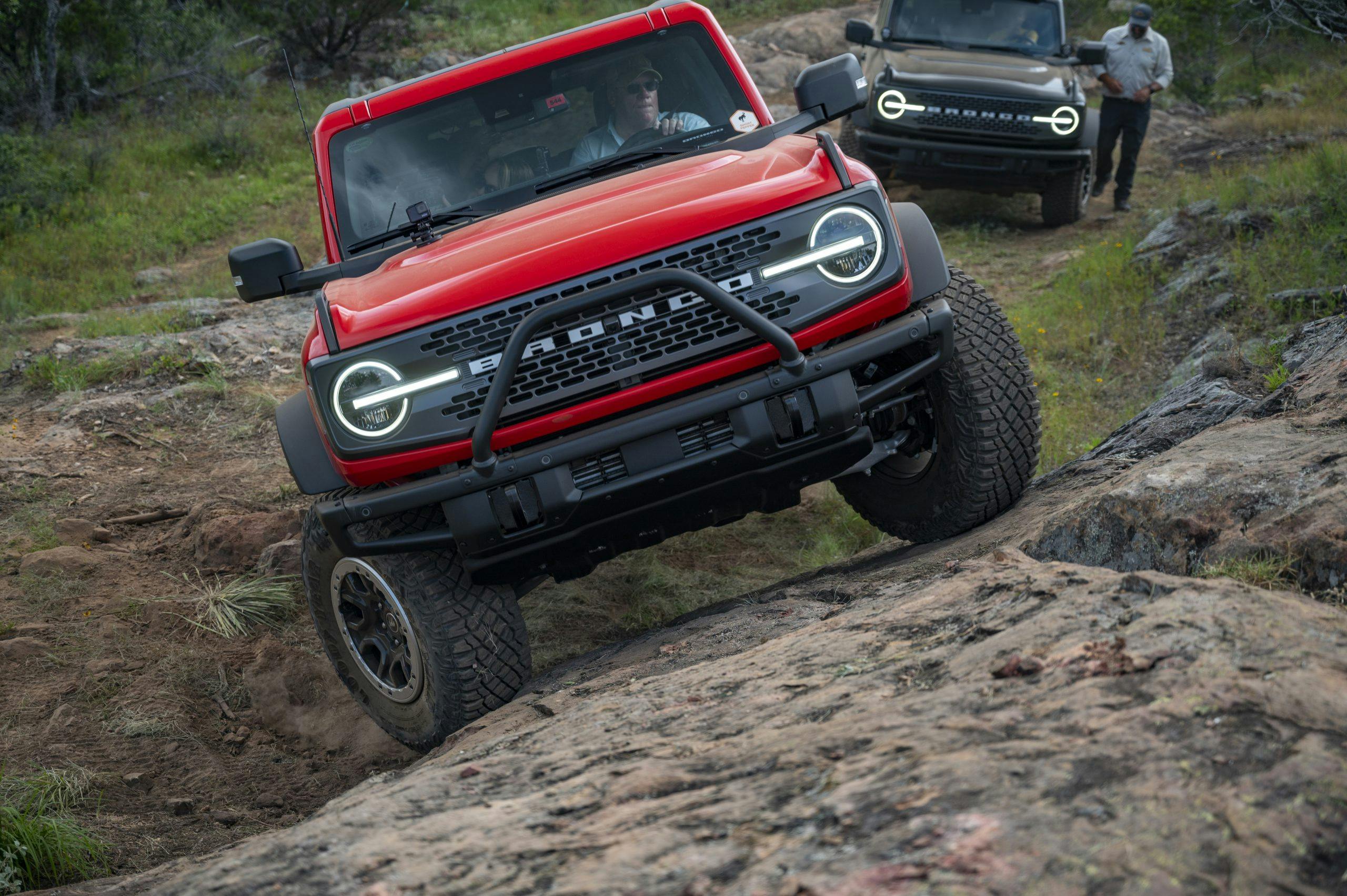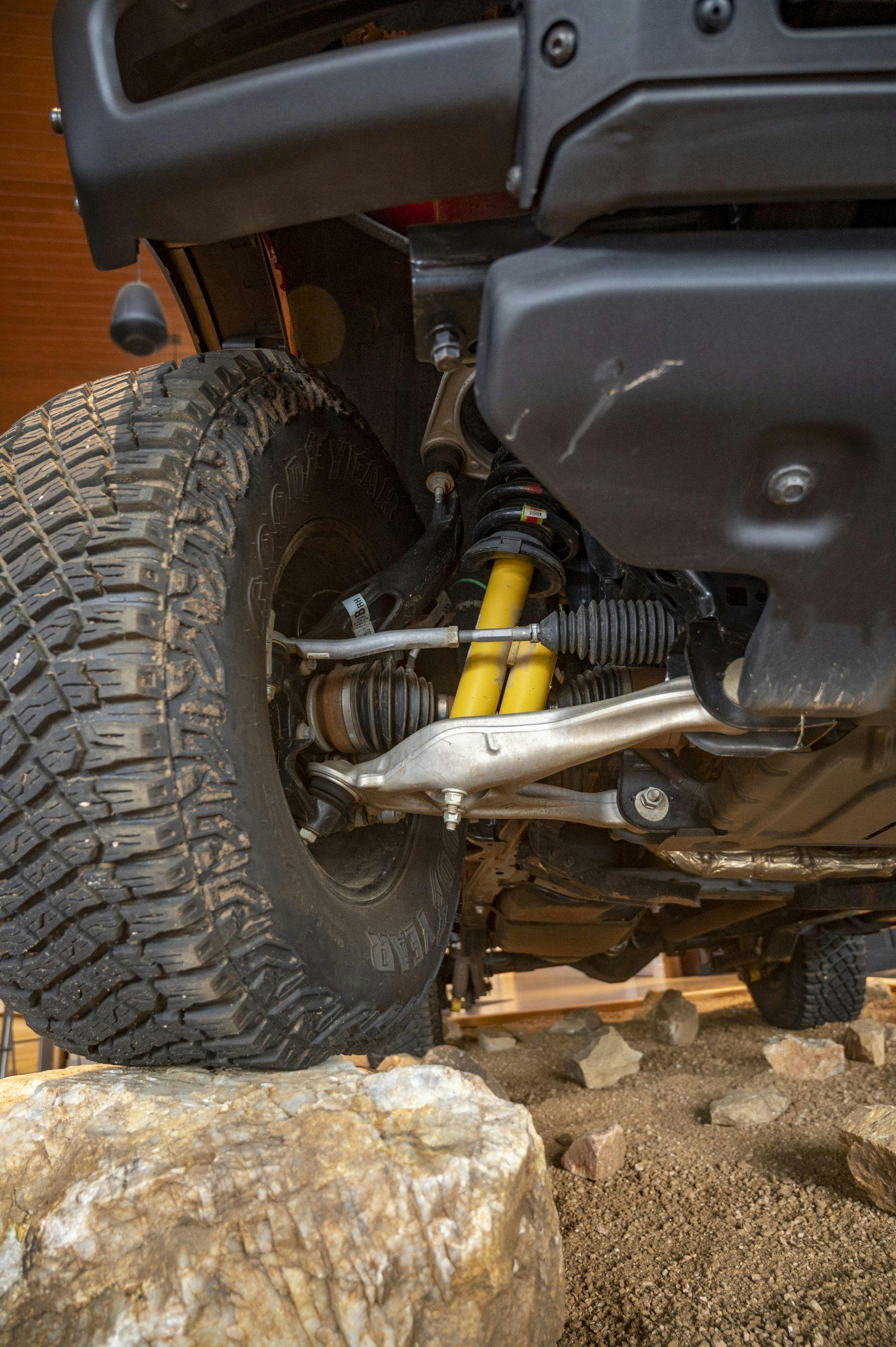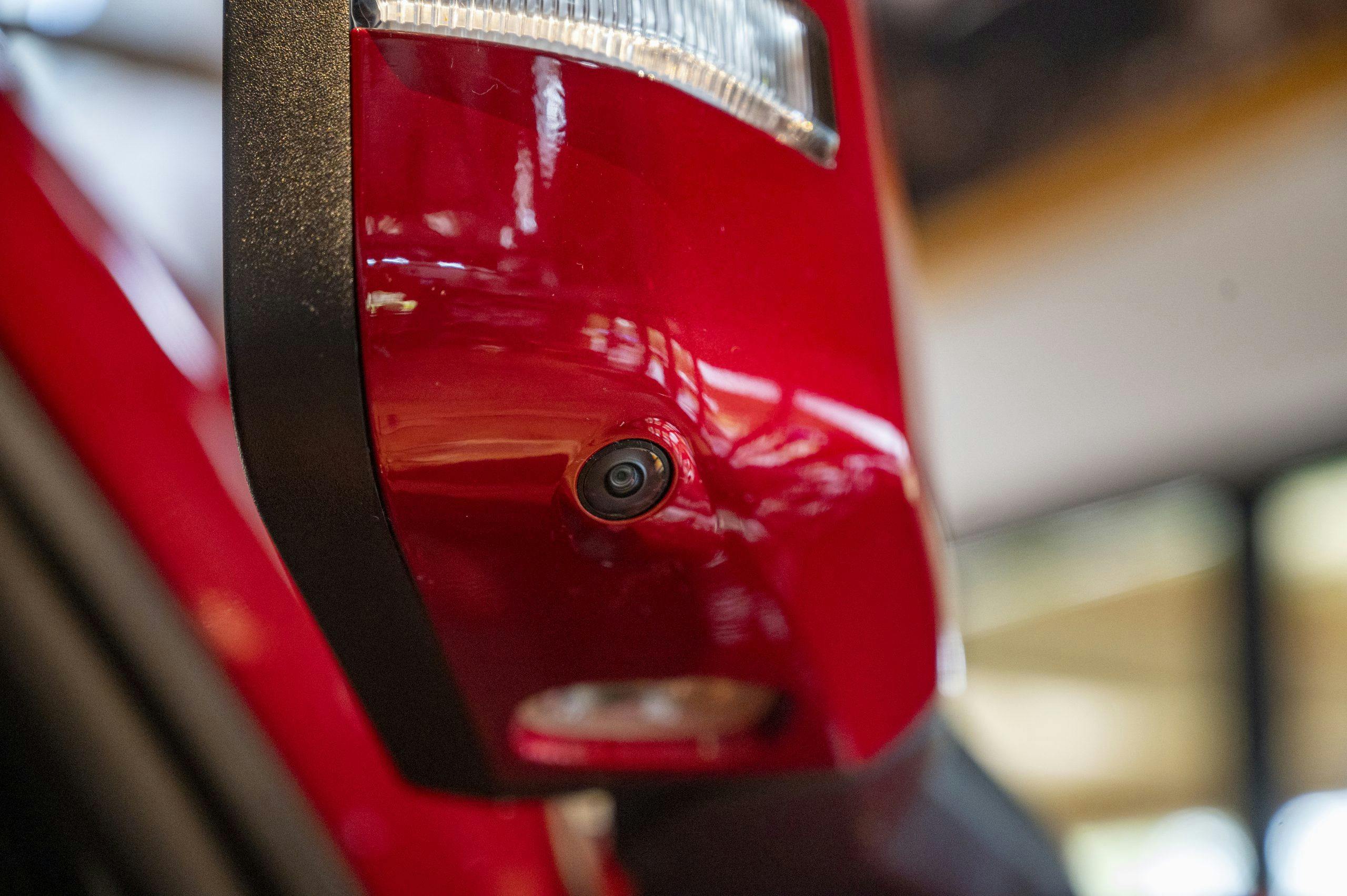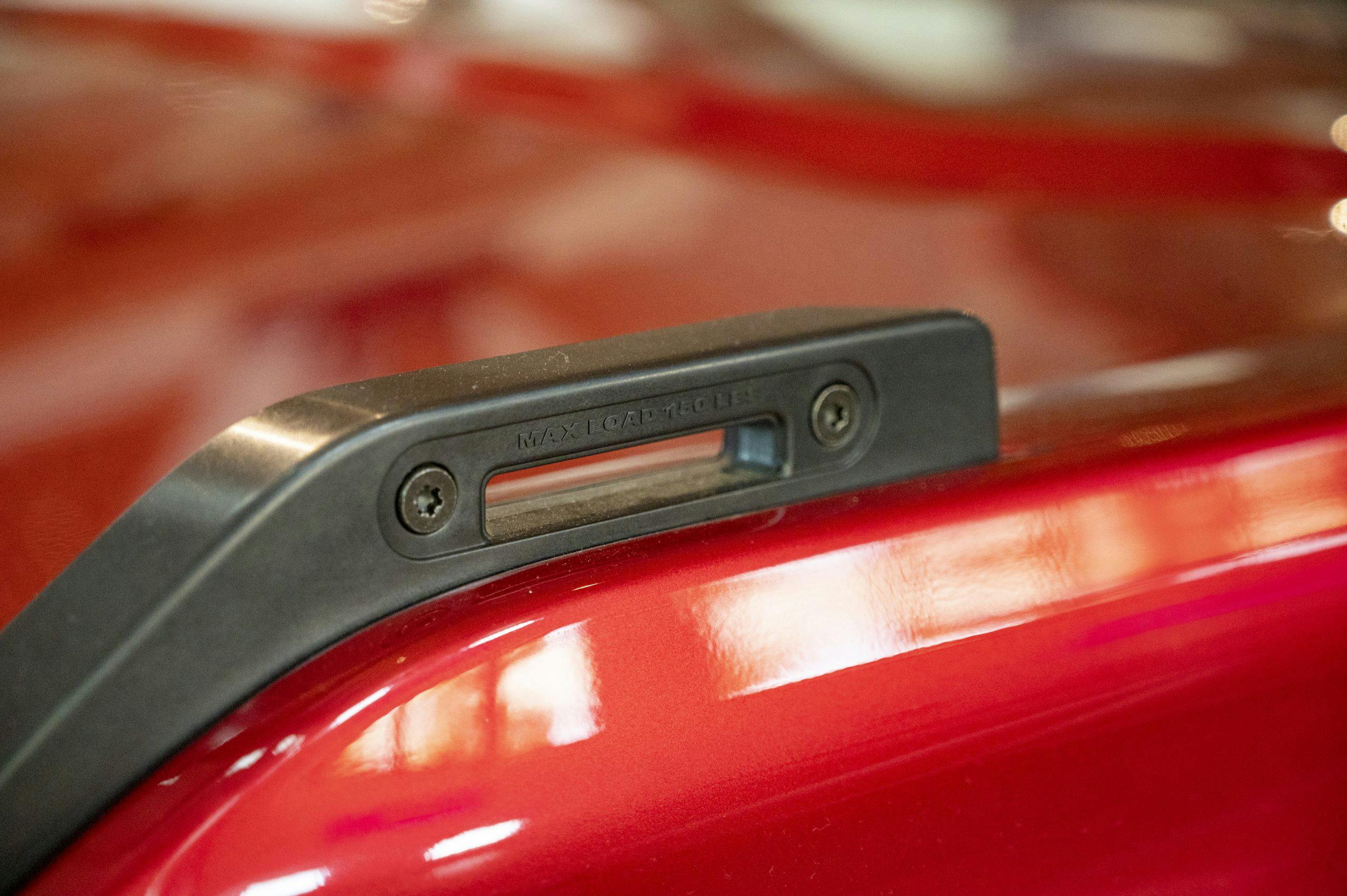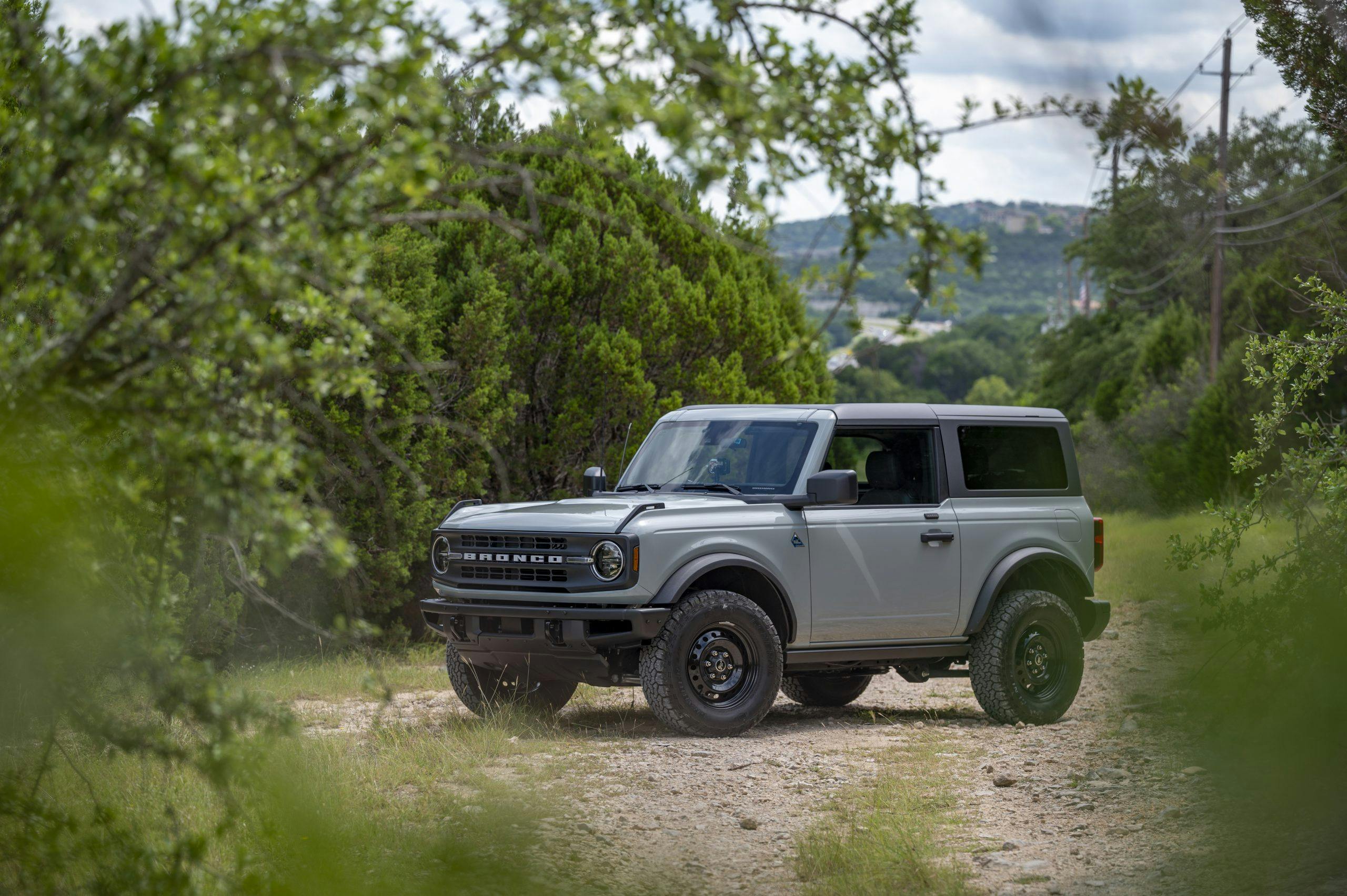Media | Articles
First Look Review: 2021 Ford Bronco
Ford’s revival of the Bronco nameplate is complicated. On one hand, this new product needs to meet the standard set by the Wrangler as an all-capable, warranty-backed off-road rig. On the other, perhaps weighing more heavily, we have the expectations of the Bronco legacy and its generations of impact on buyers. The Bronco needs to eat the Wrangler’s lunch, but conquest sales alone won’t support the incredible resources poured into the sixth-generation off-roader. Ford also needs to bring all those Bronco fans back, understanding that the Bronco had a few very different forms. Any group of “Bronco fans” will be split between the feeling of weightlessness in a steel-and-vinyl first-generation as it crested an impromptu jump like a wooden rollercoaster—and that feeling of stepping out of the final “old body style” generation like exiting a bank vault at the school drop-off, chrome and all-terrains blinding the fake-wood Caravans and Accord sedans, an elevated demonstration that they were the spawn of a cooler breed.
The hill country west of Austin, Texas, is home to the Bronco Off-Roadeo, the result of Ford’s boots-on-the-ground approach to reviving the Bronco nameplate not just for those who remember one in their past, but for those who are ready to build a future with it. Bronco Off-Roadeo’s trails are progressively more technical, and with each of the three courses we were given, a new set of tools appeared in the machines we tested. In this first-drive review, we will focus on the off-road impact of individual options, not on the way each different trim level handled the terrain, because Ford is allowing buyers to mix and match equipment and trim to a greater extent than you’ll find in the competition.
The Wrangler has had this market to itself for a long time, although it has a few arrows in its back, halfhearted shots taken by jacked-up pickups and compromised efforts like the Colorado ZR2 and TRD Tacoma. The mid-sized trucks had all focused on road performance first, and Toyota’s last hold-out SUV, the 4-Runner, doesn’t quite feel as into the game as Jeep’s beloved 4×4. Despite the critics, and its long-in-tooth presence, the last-generation Wrangler had its best sales year right before the current-generation JL was announced, proving that there was still a craving for something that emphasized true off-roading performance instead of sliding buyers a half-hearted shock-and-spring package for something already sitting ignored in dealer lots. The Bronco has the highest bar to step over in this segment given its clear rival; the Ford is purpose-built for the occasion but still testing its own path by trying to be everything that the Wrangler isn’t today without leaving true dirtheads behind.
To that end, Ford focused on Wrangler pain points with the Bronco. Diehard Wrangler owners accept a pinch of bump steer for the price of the solid front axle’s flex, but Ford addresses that concern with a distillation of the already-refined Ranger T6 platform. Dual A-arms up front handle bumps while a Dana 44 floats out back with the help of a four-link suspension, located by a Panhard bar. An already proven and robust platform, the Ranger’s refined roots shine well in the Bronco. On-road drivability is excellent, save for slightly softer spring rates than some may be accustomed to in a modern mid-size SUV. Body motions are well controlled and never nervous, especially when equipped with the position-sensitive Bilstein remote-reservoir dampers.
At launch, the Bronco will be available with two familiar engines. The 2.3-liter turbo-four found in everything from the Ranger to the Explorer is the base choice, making 275 hp and 315 lb-ft once the turbo is wound up. Customers hoping for better highway performance, especially once loaded up with people and gear, will prefer the 2.7-liter twin-turbo-six and its 315 hp/410 lb-ft output, besting Jeep’s bread-and-butter offerings in the Wrangler (though the EcoDiesel remains unique here.) Using premium pump gas bumps these numbers to 300 hp/325 lb-ft and 330 hp/415 lb-ft, respectively. The 2.3-liter is offered with both the crawler-geared, seven-speed Getrag 7MTI550 and the 10-speed automatic co-developed with General Motors. Buyers of the 2.7-liter are limited to the automatic. If you’re a purist who’s looking to spec the Getrag with the trail-focused Sasquatch package, you’ll have to wait until the 2022 model year, according to Ford. Both engines provide adequate response and low-end torque once geared down in four-low, but the 2.3-liter needs time for the turbo to wind up in daily driving.
Marketplace
Buy and sell classics with confidence
Get behind the wheel, and comparisons to the Wrangler won’t seem as relevant; Ford isn’t copying anyone else’s work but its own, from decades ago. The dash vaguely outlines that of the original ’65–77 first-gen but stops short of going retro beyond that. The instrument cluster’s only permanent gauge is the speedometer, with a 6.5-inch screen serving all other duties, including that of tachometer. In the center stack, buyers will choose between an 8-inch display and the larger 12-inch display that’s available in conjunction with the trail camera system. On the top of that center stack are Ford’s “hero” buttons for selectable lockers, sway bars, cutting brake, and other trail-focused controls. This puts them in a natural spot for both line of sight and hand placement, making it easy to brace yourself with the dash while quickly selecting what tools you need on the fly. Another trick feature atop the dash is a 1/4-20 threaded mount, for mounting cell phones or action cameras—and there’s an optional charge port that can be added for powering devices with less clutter, too.
The transfer case is a push-button, electronic-shift affair, requiring the Bronco to be stationary while coupling the front differential and grabbing low-range, with the four-way switch ringed by the G.O.A.T. mode dial that tailors the vehicle’s traction, safety, and drivetrain settings for different use cases. Automatics with the appropriate options also house the one-pedal terrain-control button at the center. Window switches are found in the center console, just under the armrest, alongside the mirror controls. Ergonomics in this regard are excellent, with the switches you’ll need routinely in easy sight and reach while others are just out of way to make space for the former. Ford was even kind enough to keep the pedals well spaced for heel-toe taps on the throttle, allowing rev-matched downshifts to be as easy on the street as they are in the trail, even when grabbing the tractor-short crawler gear. Notable for some too is the fact that Ford has integrated curtain airbags into the Bronco’s roll bars, a feature that the Wrangler lacks.
The drive began with about 75 street miles outside of downtown Austin, behind the wheel of a fairly stripped-down Black Diamond with steel wheels and the 2.3-liter/seven-speed combo. The clutch is predictable and easy to modulate in traffic, gears fall quickly into place with the relatively close-throw shifter, though not as direct and notchy as the Wrangler’s six-speed Aisin AL6. If the clutch is let out too quickly, you’ll find yourself below the turbocharger of the 2.3-liter until it winds up, but ratios are closely matched to its power delivery once rolling and the mouse-sized exhaust housing of the turbo lets it build healthy torque when lugging up hills, even if revs dip below 2000 for a moment. Over broken pavement and rough roads, the Bronco demonstrates its biggest advantage over the Wrangler, at least where an average buyer is likely concerned. Body motions are smoothly handled despite the long travel and fairly soft spring rates, and the steering is as precise as one could expect from rolling on gumball tires with lots of sidewall. This is where the compromise between the Wrangler’s solid axle and the Bronco’s IFS will play a deciding role for some buyers; there’s just no getting around the inherent traits of each suspension design, and the Bronco is plainly more civilized.
Once at the Bronco Off-Roadeo site, just a few miles west of Marble Falls, the real critical driving began with three trails and three levels of Broncos, distinguished more by the mechanical options used in the trail than the badges on the door. The key differentiator here was the packages that provide the switchable rear locker, front locker, cutting brake, and front sway-bar disconnect. We resolved to evaluate the Bronco from the perspective of off-road utility, attempting to determine which options would be more valuable for a spectrum from the weekend wheeler to the local diehard who’s anxiously awaiting the chance to take this on his secret trail.
On paper, Ford has all the technical bragging rights on the Wrangler (looking at Jeep’s homework over the shoulder has that effect). In practice, too. There’s little concern about hanging a Bronco’s bumper off an obstacle, especially with the modular steel bumper that’s offered torn down to its minimal skeleton. Suspension travel is said to exceed that of the Wrangler, though the use of it is heavily dependent upon ordering the Badlands’ front sway-bar disconnect. Don’t want to pay for Badlands? You can add the front and rear selectable lockers via the Sasquatch package or Black Diamond trim, allowing the Bronco to find its way even without the disconnect. For those really looking to save a few extra bucks, the Sasquatch package can be sacrificed from the Black Diamond, which retains the rear locking differential and factory-supplied body armor, still carrying excellent capability for most trails in the U.S. even without the Sasquatch’s additional gearing, tires, and front locker—you just may have to work for it more. The absolute bargain on the menu, however, is ordering a base-model Bronco two-door and only checking the Sasquatch package—rolling out of the factory for under $40,000 with front and rear lockers, beadlock-capable wheels wrapped in 35-inch tires, and the incredible Bilstein external reservoir shocks that are only shared with the up-trim Badlands and Wild Trak.
This scoots in well under the price of a Wrangler Rubicon, the only difference being the lack of a sway-bar disconnect (the aftermarket will surely handle that), while still providing most of the tangible capability. When the manual becomes available for 2022, it will offer a crawl ratio of 94.75:1 compared to the Rubicon’s 84.2:1 (Jeep has since fired back with the Xtreme Recon with 4.88 gears and the 100:1 crawl ratio), a little extra help when getting things moving while the vehicle is crossed-up on an obstacle. Broncos with the 10-speed automatic offer a “cutting brake”, a braking mechanism that grabs the inner-rear wheel to anchor it down while the vehicle pivots around it with a tighter turning radius. While its home is in making the four-door’s wheelbase shrink, it’s like steering a forklift around a tight warehouse with the shorty two-door. If I were feeling a little extravagant, I’d also grab the optional overhead switches with their pre-run accessory wiring harnesses, which will save owners from having to tear apart the interior to snake in new wiring for lights and other aftermarket accessories.
What Ford really gets right here is in the implementation of these features, all of which can be activated on the fly with little pushback from the vehicle’s nannies. Whereas the Wrangler’s lockers have to be activated rear-first, and then the front via a two-way toggle switch, the front and rear lockers on the Bronco can be selected individually, opening up new techniques by keeping the front locked and rear open to “front dig” if needed. The sway-bar disconnect is tolerant to being decoupled and reattached on the fly, and it will remember to unlock again if a driver breaks the 20-mph speed limit on the feature before slowing back down. And the much-anticipated cutting brake is smooth too, biasing its stranglehold over that rear-inner tire based upon vehicle speed and steering angle, smoothly shortening the steering radius without jerking the Bronco around its pivot point. Crawler Gear lives up to the hype too; it’s easy to engage and handy even just for grabbing a little extra torque when in 2hi or 4hi, saving the need to grab the transfer case in many quick situations. And speaking of vehicle nannies, there are practically none. G.O.A.T. mode is great for quickly ordering up the settings that will best help tackle certain terrains, but simply clicking the traction-off button at the top of the dash along with the vehicle’s own calibrations for entering 4-lo provides a seamless experience for more creative drivers who wish to left-foot-brake or slide the Bronco around in certain maneuvers.
The Bronco’s styling exacts a few penalties on the trail. Without the available 360-degree Trail Camera, placing the front-passenger tire can be vague with the high ridgeline of the trail sights blocking the scenery behind them, and there’s no real landmark on the smooth hood to reference, either. Those trail sights help some drivers locate the corner of the body relative to a tree or rock wall, but they’re not as useful for visualizing where that all-important front-passenger tire is. Even with the 360-degree trail camera, the overhead view becomes useless if the side-mirrors are folded in on narrow trails, as the lenses point at the door panel, and it’s still possible to blind parts of the camera system with mud and sand too, making these physical sight-lines of the Bronco all that more important to some drivers.
With a spotter, or some time to adapt to tire placement with experience, this can become less of a factor for lower-trim Broncos without the additional electronic eyes (and there is still a front-view camera for spotting ahead of the bumper), but the learning curve is steeper when compared to the narrower, lower hood line of the Wrangler. None of these little sight-line differences count as absolute deal-breakers, though reliance on a camera system is something that will always fall to user preference, and there’s an argument to be made for removing the mirrors entirely in some narrow trail networks that Ford sweeps under the rug when touting the cowl-mounted units that stay with the body once the doors are unhinged.
Our time on the trail confirmed that the Bronco is at least playing in the same neighborhood as the Wrangler off-road. The real test will be in the coming years as owners modify them and explore those tricky local spots with the slightly wider Bronco (good thing those rear quarter panels can be replaced!) and its controversial IFS. Ford has focused on a set of buyers who would normally turn to the Wrangler but are perhaps begrudgingly doing so with the trade-offs that come with daily-driving a Jeep with a live front axle. Reaching over with the metaphorical 10-foot straw to drink Jeep’s milkshake couldn’t be the only goal, however, and the Bronco pulls off its intent to capture the practical capability of the original without being an empty retro styling play. At no point is it trying to be a Wrangler copycat; there’s a clear impact from wringing a focused 4×4 product through the Blue Oval’s leadership and development teams, resulting in a well-thought-out list of configurations, capability, and fun-having that’s accessible for anyone.
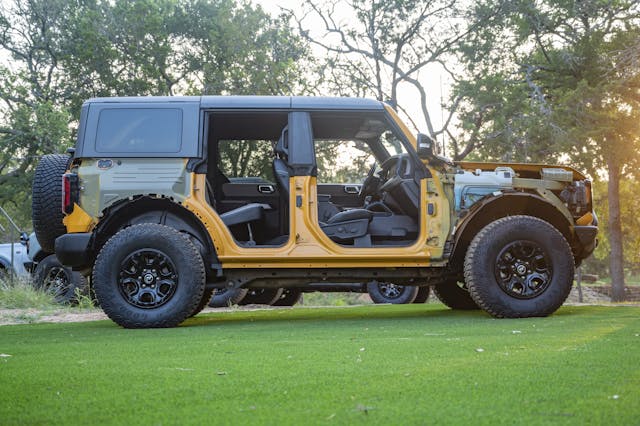
2021 Ford Bronco
Price (base): (four-door, before options): $33,200 (base)–$44,590 (Badlands); Add roughly $2500 to $5000 for Sasquatch package, depending on trim. $1495 destination fee.
(two-door, before options) $28,500 (base)–$42,095 (Badlands); Add roughly $2500 to $5000 for Sasquatch package, depending on trim. $1495 destination fee.
Highs: A very careful and well-thought-out competitor to the Wrangler, promising much of the capability without some of the on-road compromises. A highly configurable ordering menu means there’s real value to be found for those who want it while keeping the trim levels tiered for those who need the simple checkmark. High-speed damping in all shock packages is well tamed, giving the Bronco extra chops on the average fire road or washboard trail. The factory-baked modularity in accessories and body panels is welcome from the perspective of both upgrading and repairing a Bronco over its lifespan.
Lows: Visibility due to the wider body, and those larger dimensions will test Ford’s modular bodywork in some trail networks with notorious “Jeep Squeezes.” No manual Sasquatch for MY 2021, so save those orders for the next round of MY 2022 units. The digital bar graph tachometer is nearly impossible to see, requiring scrutiny in quick glances at rpm.
Summary: While the ultimate test will come from owners who have no regard for the preservation of press fleets, the Bronco appears to offer a firm foundation for Ford fans and trail fiends all the same. Jeep has its first real competitor to the Wrangler in decades, and Ford appropriately applies pressure in the areas they knew would cater to a different audience—namely in the convenience of pulling doors, refined road manners, and ease of use when grabbing certain 4×4 features.

